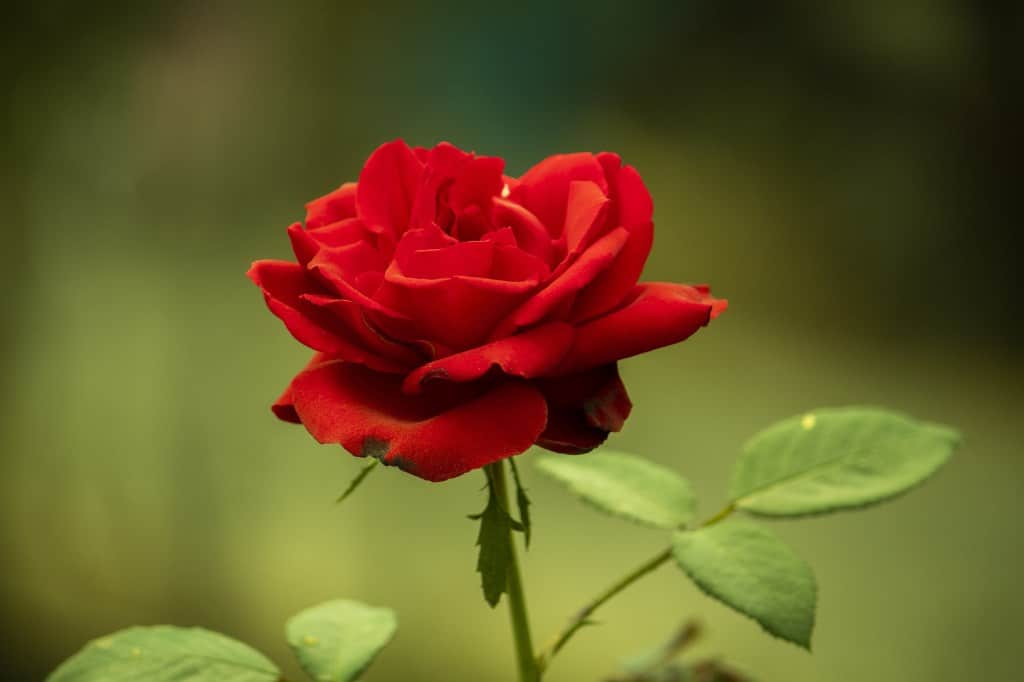In this article, we will discuss about the red things that you can find in nature. Not surprisingly, most things that are red come from flora and fauna.
But have you ever thought about how many red things there are in nature? The first three red things that come to mind are fire, roses and sunsets.
Red represents action, energy, power, and passion, so it’s difficult not to be drawn to it when you see it in nature.
Today, we compiled a list of red things found in nature, such as foods (fruits, vegetables), plants, animals, and pets.
What is associated with red?
Red is associated with action, energy, and passion. It is an emotionally charged color. Furthermore, it can represent sensitivity, love, and desire.
Because of its long wavelength, it is also the most visible color in the spectrum and the color that draws the most attention.
Red has long been associated with bravery and danger. However, red can also represent warning signals, as seen in certain animals that use it to defend themselves from predators.
A visual list of things that are red
Today, we can see a variety of things that are red. Here is a list of red things that can be found in nature. This list includes red foods, animals, and gemstones.
Red things
Fire

Fire – Fire is the visible result of the combustion process. The fire color is red because the fuel combustion is incomplete. The color of the flame is determined by the temperature of the flame and the material being burned.
The red-hot hue of the fire occurs between 977 and 1830 degrees Fahrenheit, while orange flames burn between 2010 and 2190 degrees. It’s one of the most intensely red things.
Mars
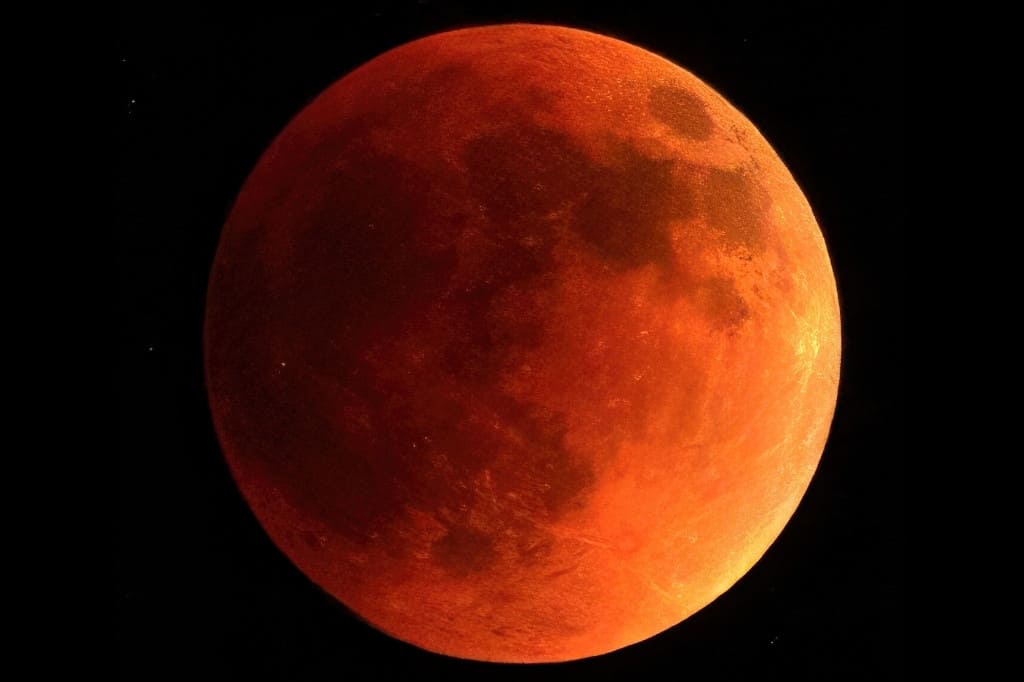
Mars – Mars is reddish because its surface contains a high iron oxide concentration. As a result, many rocks on Mars are rich in iron; when exposed to air, they oxidize and turn reddish. This is similar to the rusting process that we are all familiar with.
Sunset

Sunset – The reddish hue of the sunset is visible for a short period of time at sunset. Sunsets have a reddish hue because sunlight travels a greater distance, and shorter wavelength blue light is scattered more. As a result, we see deeper red-to-orange hues with longer wavelengths.
Ruby
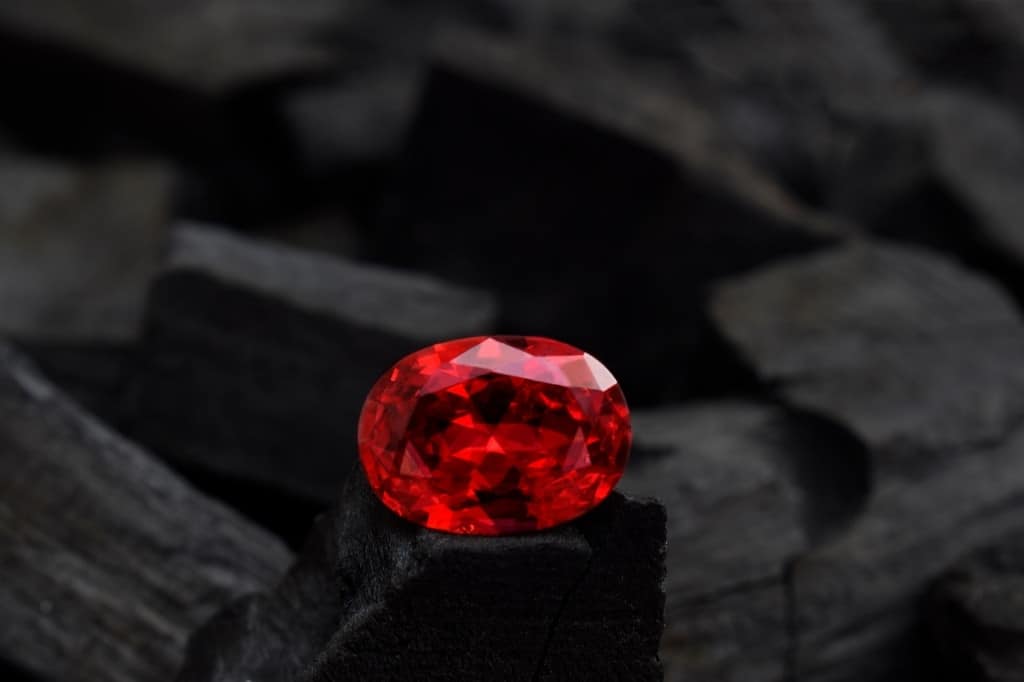
Ruby – Ruby is a bright red gemstone. The trace element chromium is responsible for the Ruby gemstone’s red color. The more chromium it contains, the brighter the red.
Furthermore, it has the potential to cause fluorescence. The best rubies are deep, vibrant red. Obviously, these are the most expensive.
Red Spinel
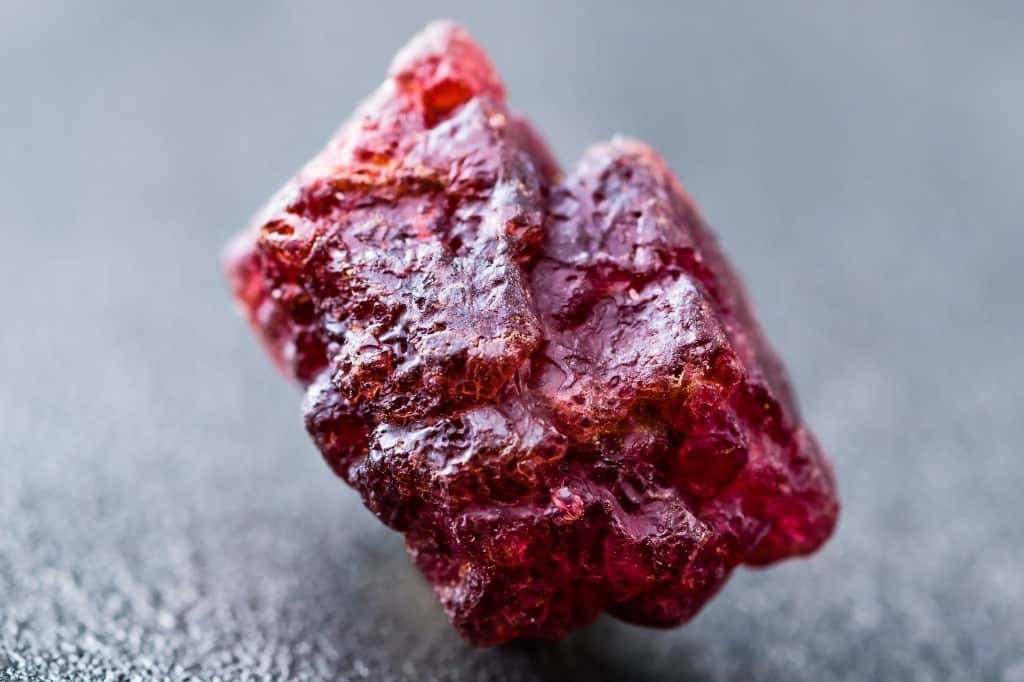
Red Spinel – Red Spinel is a Ruby-red spinel family variety and a very valuable gemstone. Red spinel is the most valuable and rare of all gemstones.
Despite its scarcity, red spinel is about 30% less expensive than ruby. It is one of the natural red things, with shades ranging from orangy red to purplish red.
Red Coral
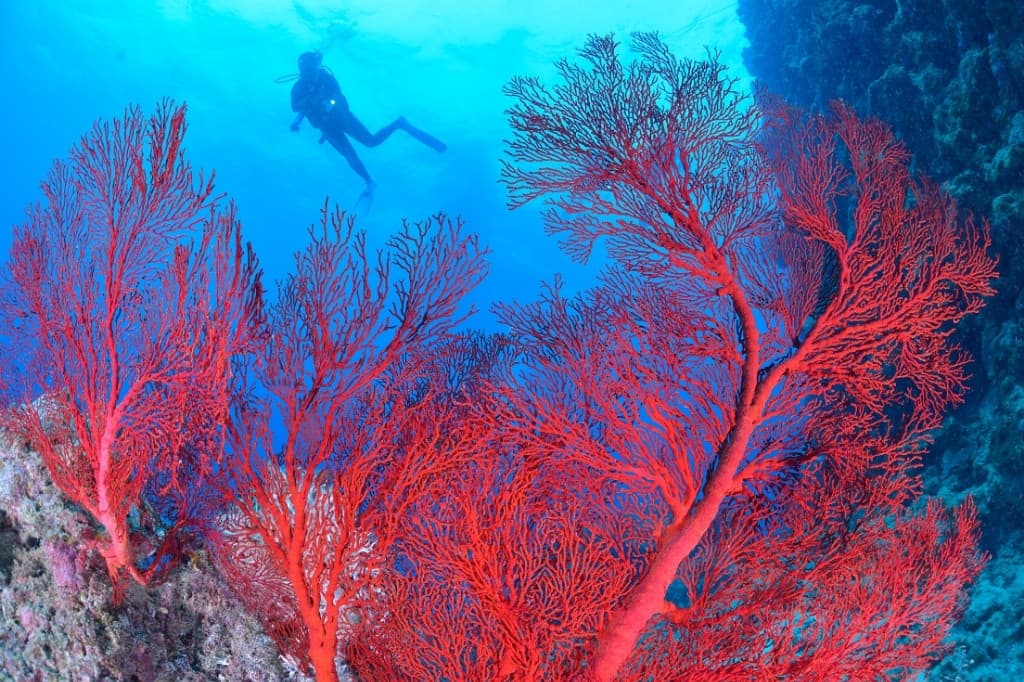
Red Coral – Also known as precious coral, red coral is an organic (natural) gem. It is made up of the skeletons of individual polyps that have been deposited together.
Red coral is a stunning blood-red color that acts as a sunscreen to protect algae. Fluorescent proteins absorb blue light and emit red as a result.
Red Tourmaline
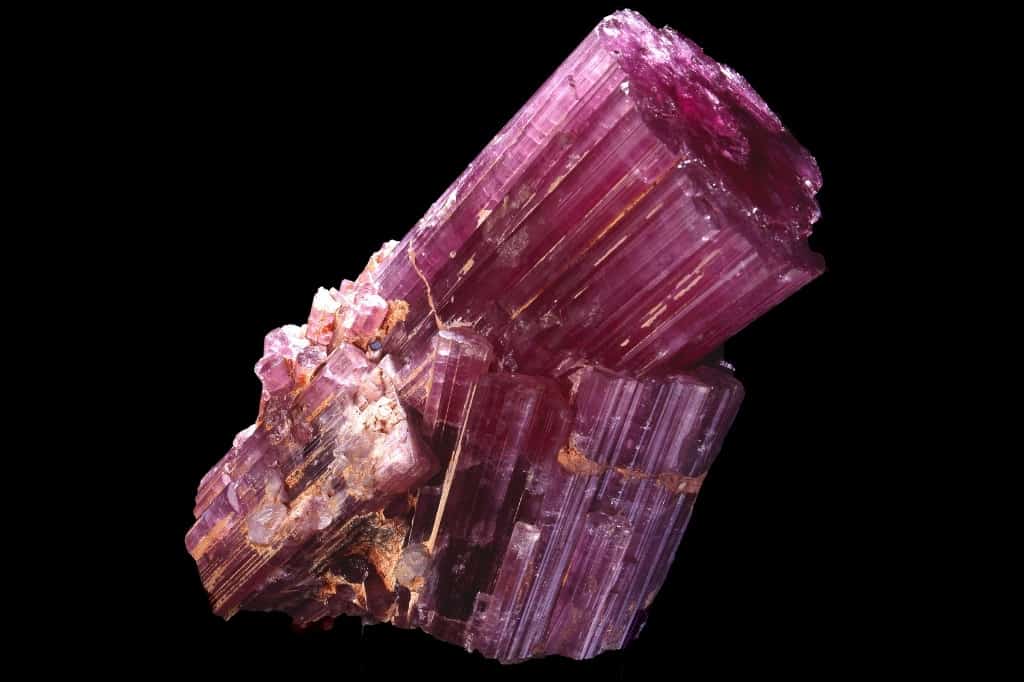
Red Tourmaline – Red tourmaline, also known as Rubellite, is a natural gemstone mined in Brazil, Africa, Nigeria, Zambia, Madagascar, and Afghanistan. It can be red, purplish red, orangy red, brownish red, or even pink in various shades.
Almandine Garnet
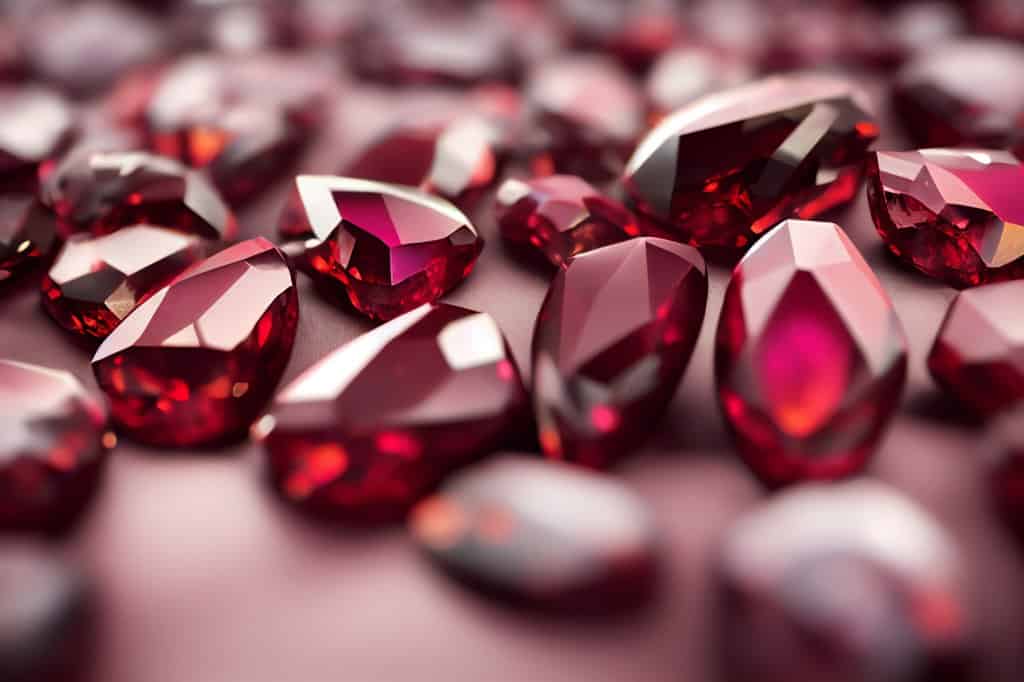
Almandine Garnet – A deep red to purple iron alumina garnet. Almandine garnet is a popular gemstone because it is the most valuable color and the hardest form of garnet.
The presence of iron gives almandine garnet its red color. The redder the stone, the more valuable it is.
Red Zircon
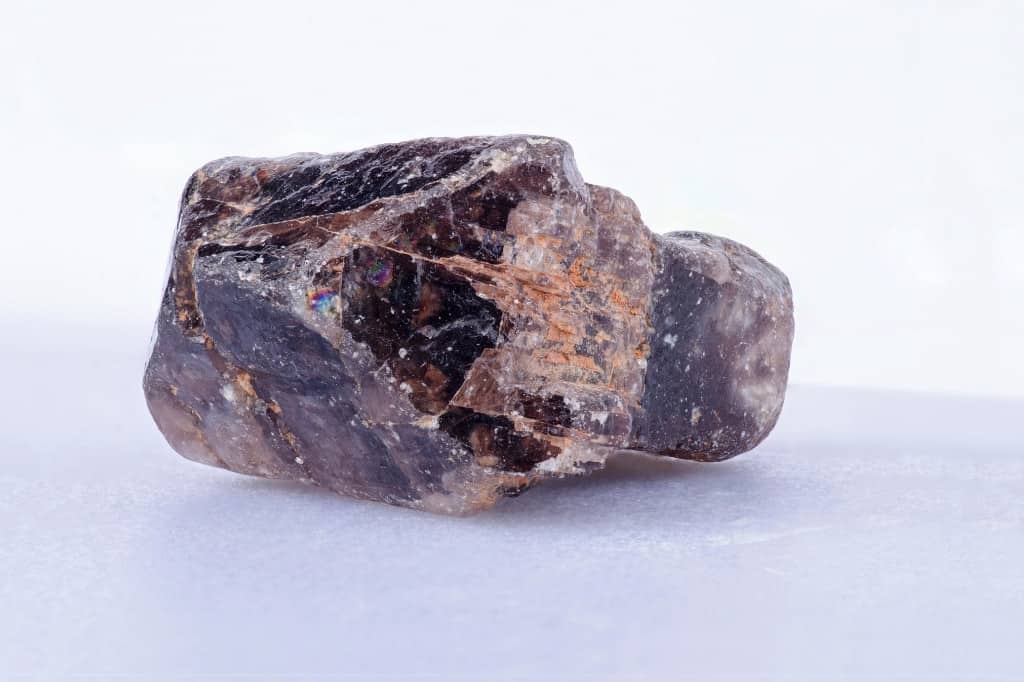
Red Zircon – Also known as hyacinth, red zircon is a naturally red-colored gemstone. However, this semi-precious gemstone is a vivid, bright red color, making it a fairly rare color.
Red animals
Red Panda
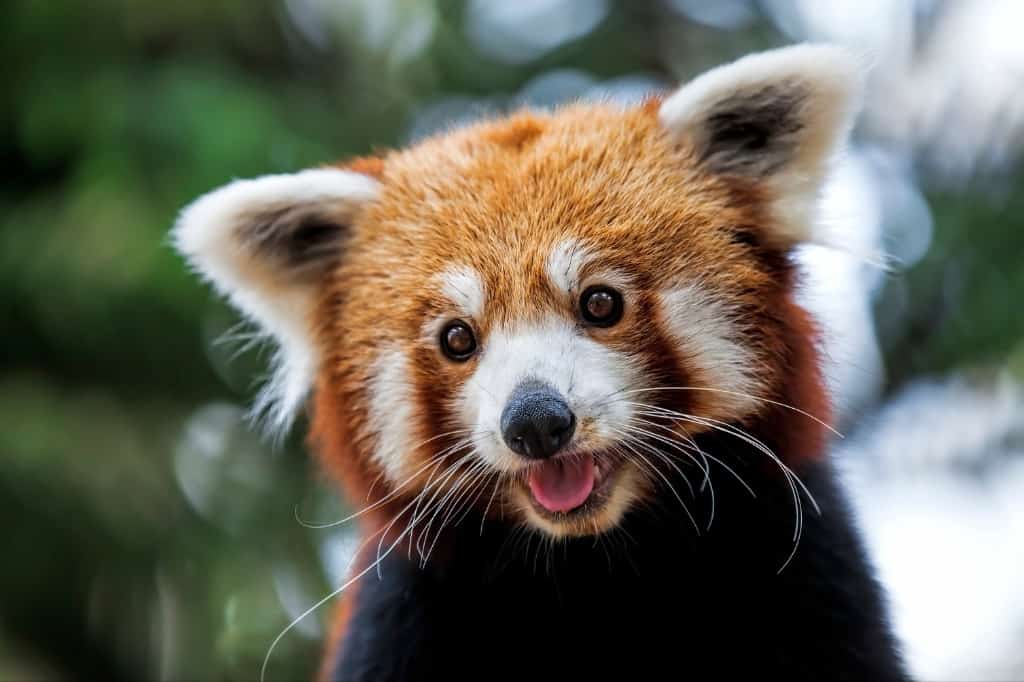
Red Panda – Also known as the lesser panda, this small mammal is well-known for its kitten-like features. It is found in southwestern China and the eastern Himalayas, and its color ranges from red to orange-brown.
There are approximately 10,000 red pandas left on the planet. According to DNA evidence, red pandas are members of the bear family.
Ladybug

Ladybug – It is one of the most beautiful red things. These tiny creatures are well-liked because they are beneficial predators.
Ladybugs use their bright red color to politely warn predators that they are not edible. The more intense the red, the more potent the chemical cocktail.
Red Glider Butterfly
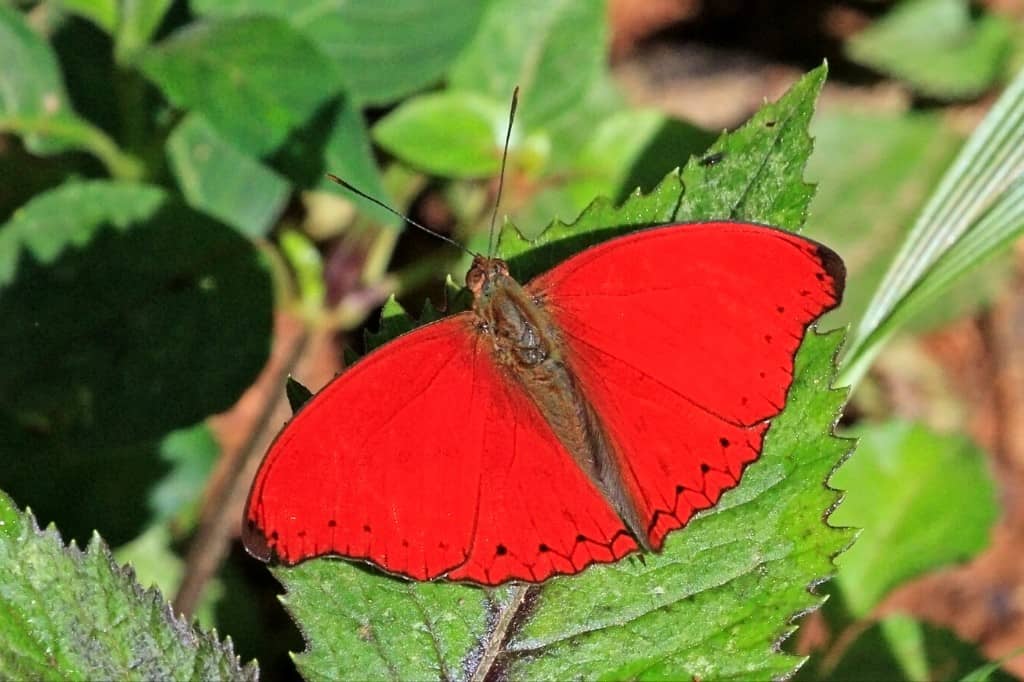
Red Glider Butterfly – With a blood-red hue, this butterfly is one of a kind. Known as Blood-red Glider, it is found in Central African countries such as the D.R. Congo, the Central African Republic, Kenya, Uganda, and Tanzania. The Blood Red Glider is another name for it.
Scarlet Macaw
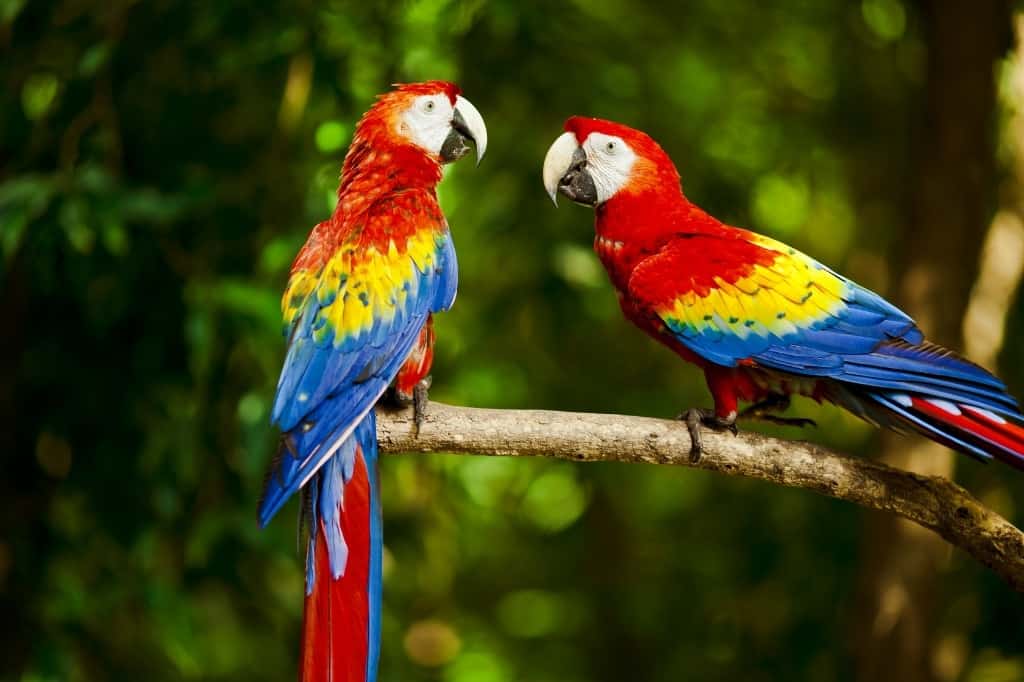
Scarlet Macaw – A popular red, yellow, and blue macaw species. The name is derived from the stunning colors of their plumage.
These colors are used by scarlet macaws to politely warn predators to stay away. It’s a distracting and unappealing color. These macaws are adorable pets that can grow 38 inches long (97 cm).
Red Lory
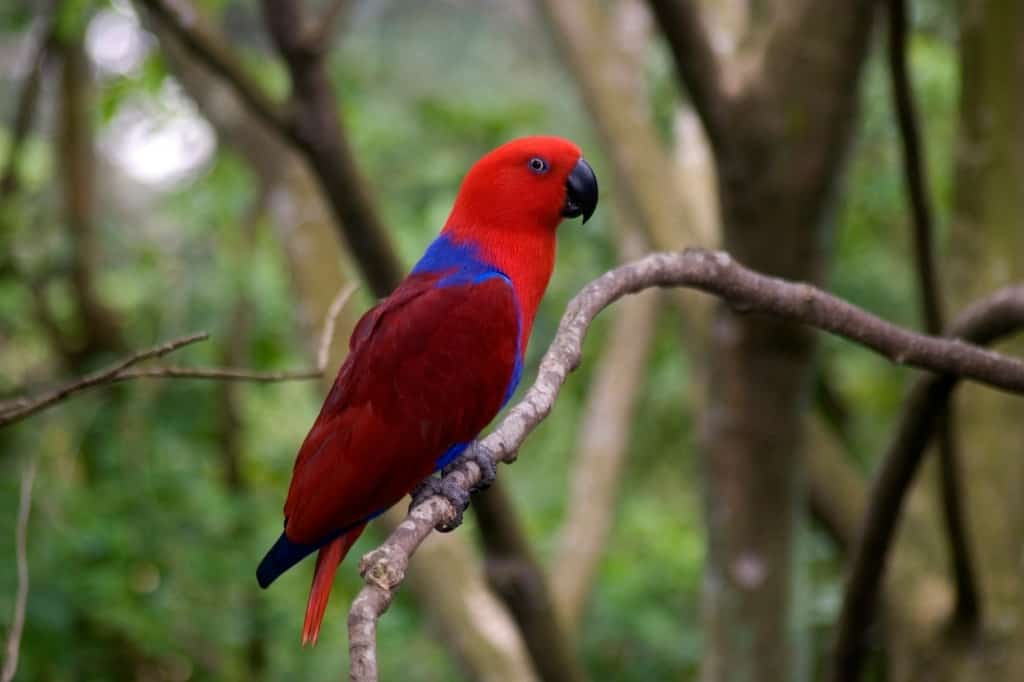
Red Lory – The Red Lory is a spectacularly deep red small parrot with blue markings on its wings. Its bright red color makes it a very attractive pet.
Siamese Fighting Fish
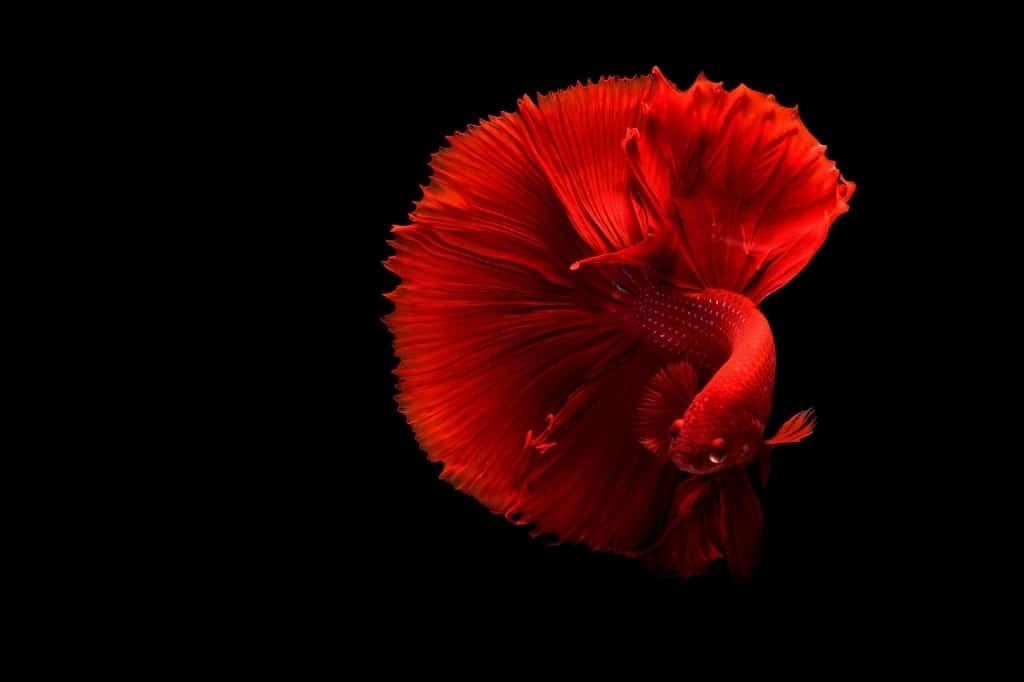
Siamese Fighting Fish – Known as Betta or labyrinth fish, the Siamese Fighting Fish is a freshwater native to Southeast Asian countries that live in the shallow water of marshes or slow-moving streams.
These carnivorous fish, domesticated around 1000 years ago, feed on insects and larvae.
Crab
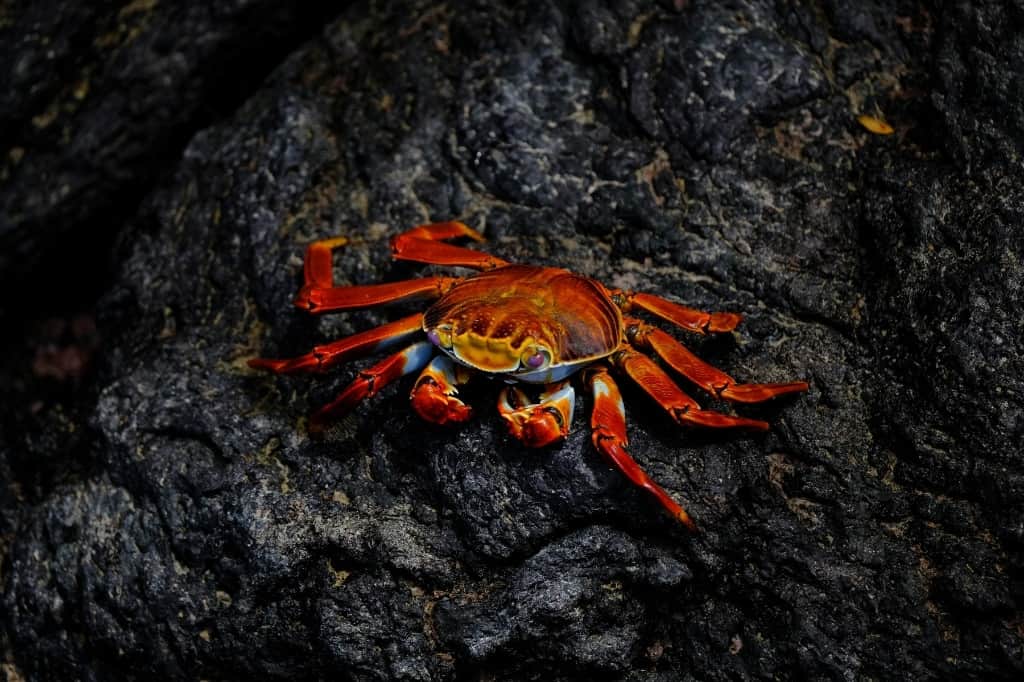
Crab – The crab is a decapod crustacean that lives in the world’s oceans and can live for up to four years. It has ten legs and can move in any direction. They are distinct in that their exoskeleton is made of chitin, which protects their soft tissues.
Females can lay up to 2000 eggs at one time. The red color of crabs is caused by astaxanthin, a pigment found in their shells that absorbs blue light and emits red.
Lobster
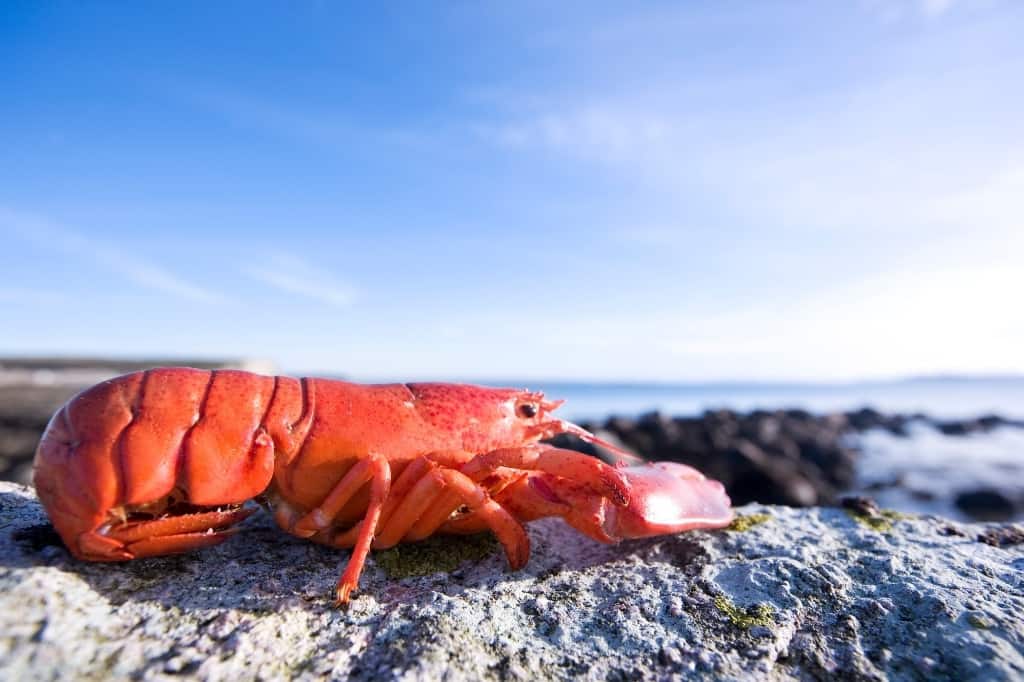
Lobster – A marine crustacean. The lobsters can eat each other. Also, they chew with their stomachs, which have a set of teeth.
Lobsters’ shells are red due to the presence of the pigment astaxanthin. This has the ability to absorb blue light, giving them a red appearance.
Humboldt Squid
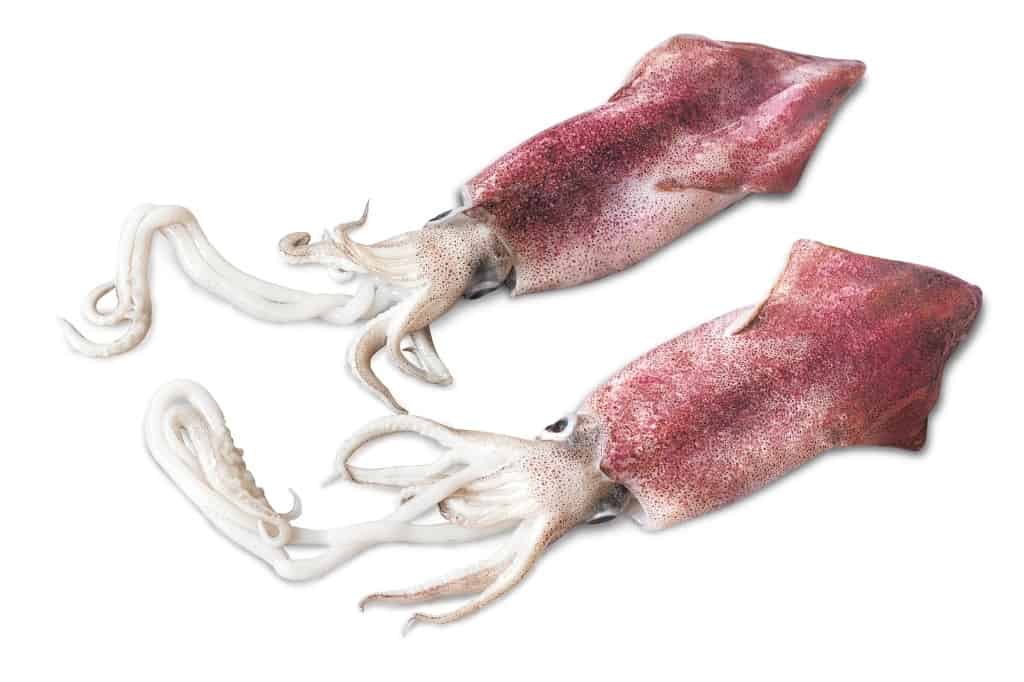
Humboldt Squid – Also known as the jumbo squid, the Humboldt squid is one of the largest predatory squids. It can grow 8 feet 2 inches long and live in the eastern Pacific Ocean (2.5 m).
It can also be as heavy as 100 pounds. They are excellent predators with the ability to change colors while hunting.
Scorpaena
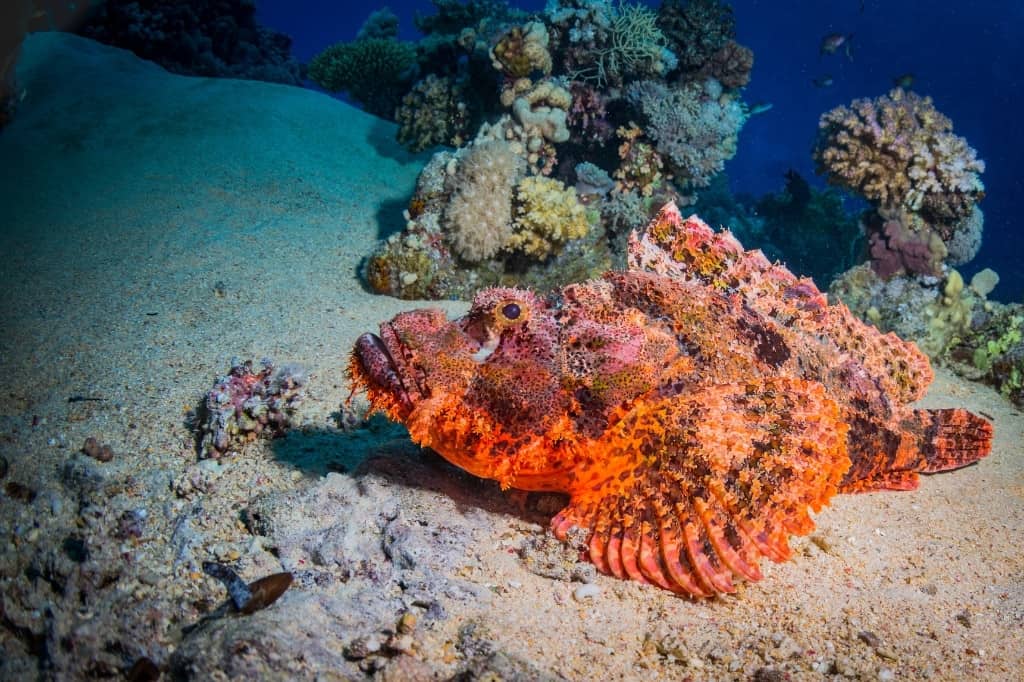
Scorpaena – This marine ray-finned fish is a hybrid of the flaky white fish and the crab. The colors of Scorpaena range from light grey to bright red.
Starfish
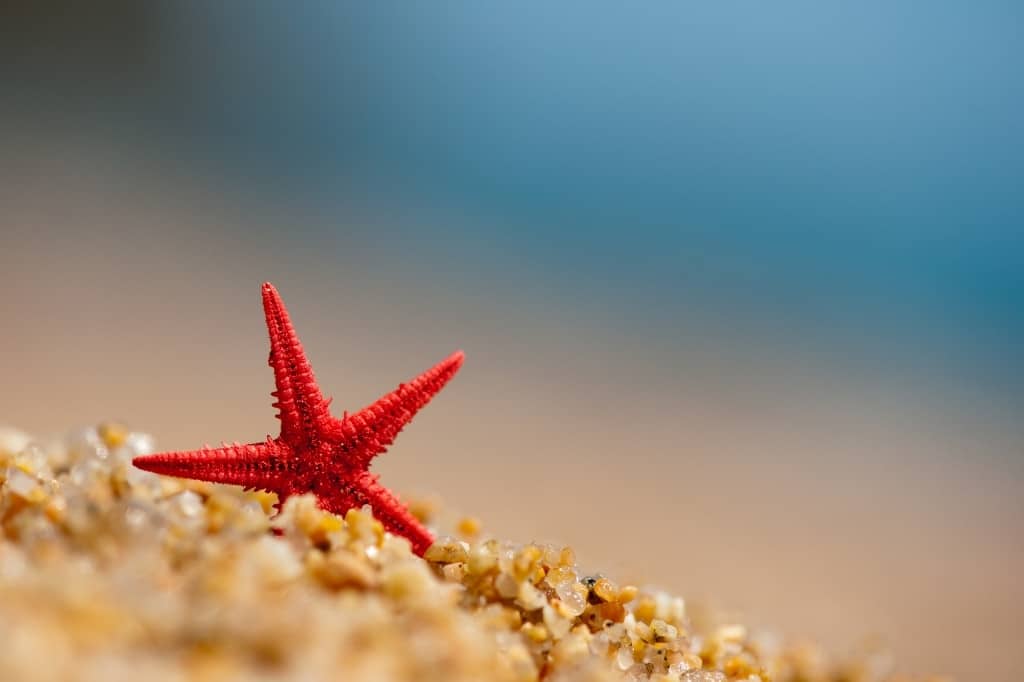
Starfish – A sight to behold, starfish are invertebrates with various shades of red. They, also known as Red Sea Stars, do not tolerate changes in water pH, salinity, or oxygen levels.
Starfish do not have blood because seawater is pumped into their bodies to provide the required nutrients. It is indigenous to the South African coast. It’s probably one of the most prettiest things that are red.
Red-veined Darter
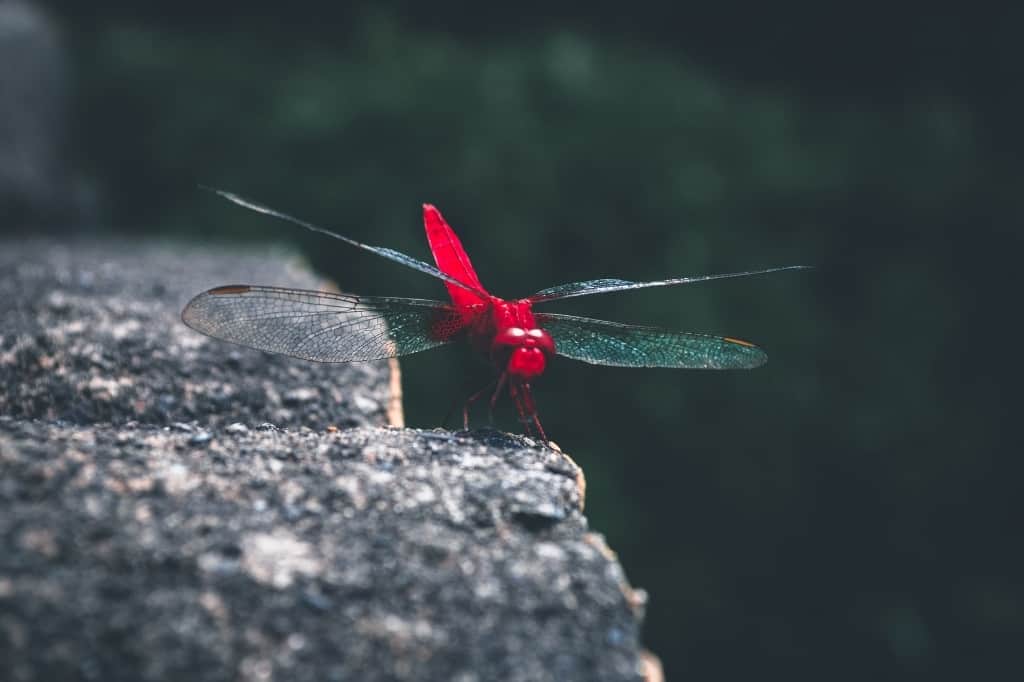
Red-veined Darter – Also known as the red dragonfly, it can be found in Africa, Europe, Asia, and the Middle East. It has a spider-like appearance.
When mature, the male turns a deep reddish color, whereas the female is yellowish. When mature, the male turns a deep reddish color, whereas the female is yellowish.
Scarlet Lily Beetle
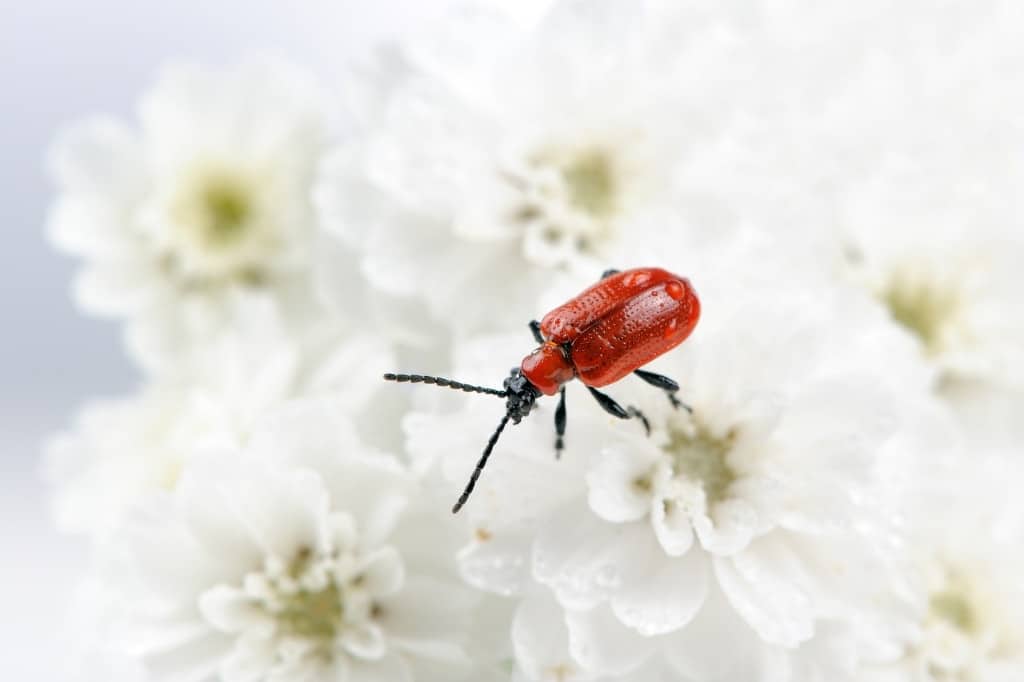
Scarlet Lily Beetle – A red lily beetle is a leaf beetle. It is native to Eurasia and feeds on lily leaves, buds, and flowers.
Scarled Ibis

Scarlet Ibis – An ibis species, the scarlet ibis is a lovely orange-red tropical bird found in the Caribbean and South America.
The scarlet ibis’ red color is caused by the carotene found in the crustaceans it consumes. Scarlet ibises can grow up to 30 inches long and weigh up to 1.3 pounds (620 grams).
Northern Cardinal
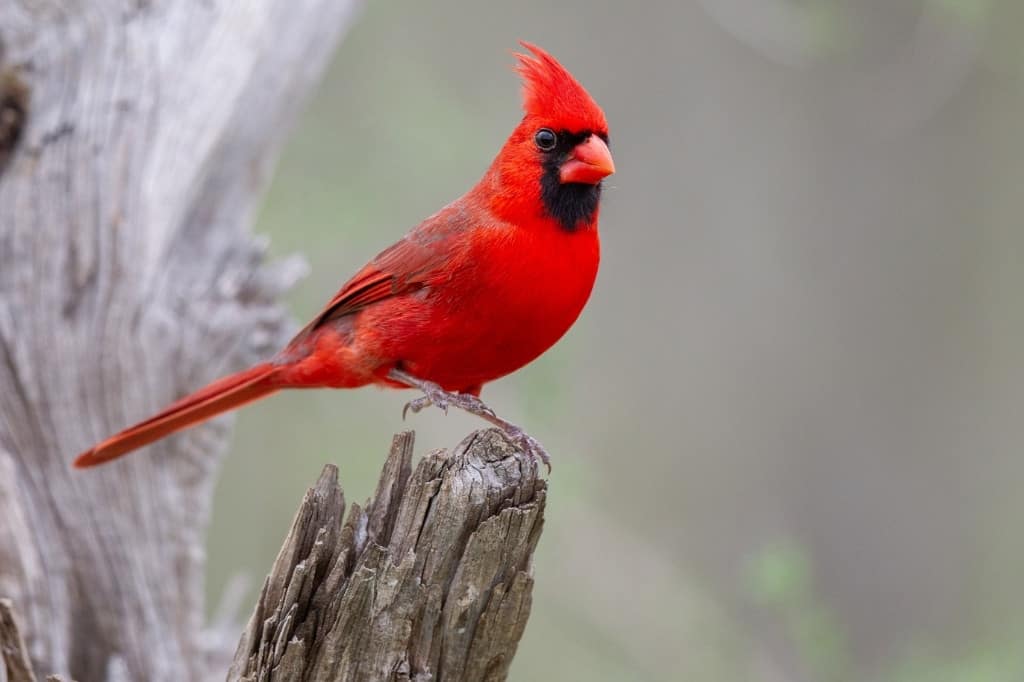
Northern Cardinal – It’s a bird in the genus Cardinalis, also known as the red bird. Males have red feathers with black spots on the neck and around the eyes, while females have red feathers with brownish tinges.
Newt
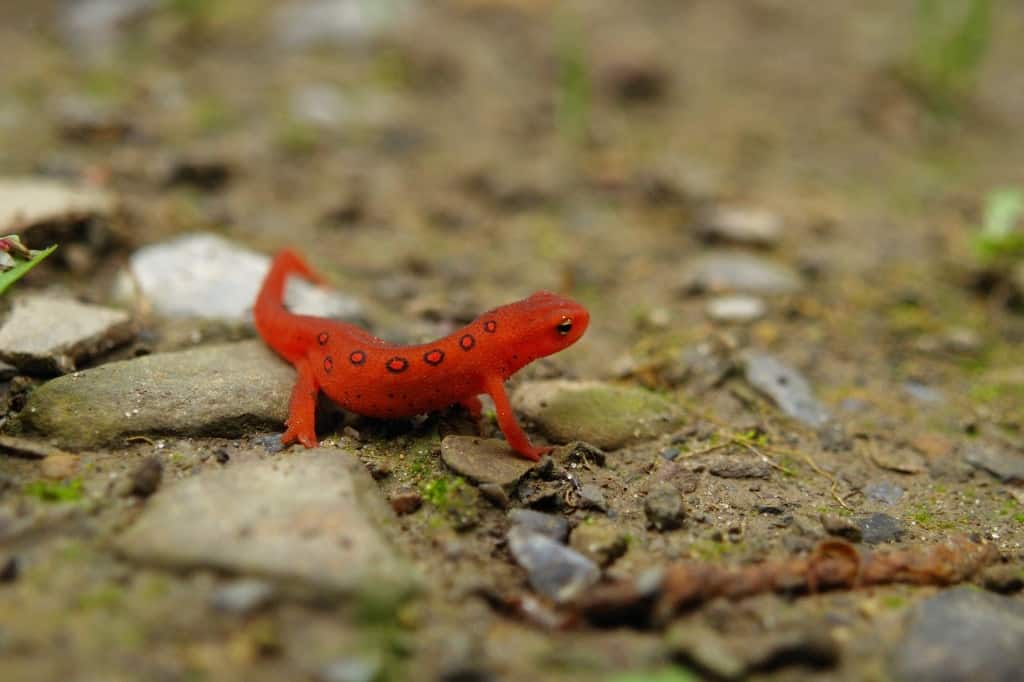
Newt – This is a salamander, a red reptile that can live in both land and water.
Tomato Frog
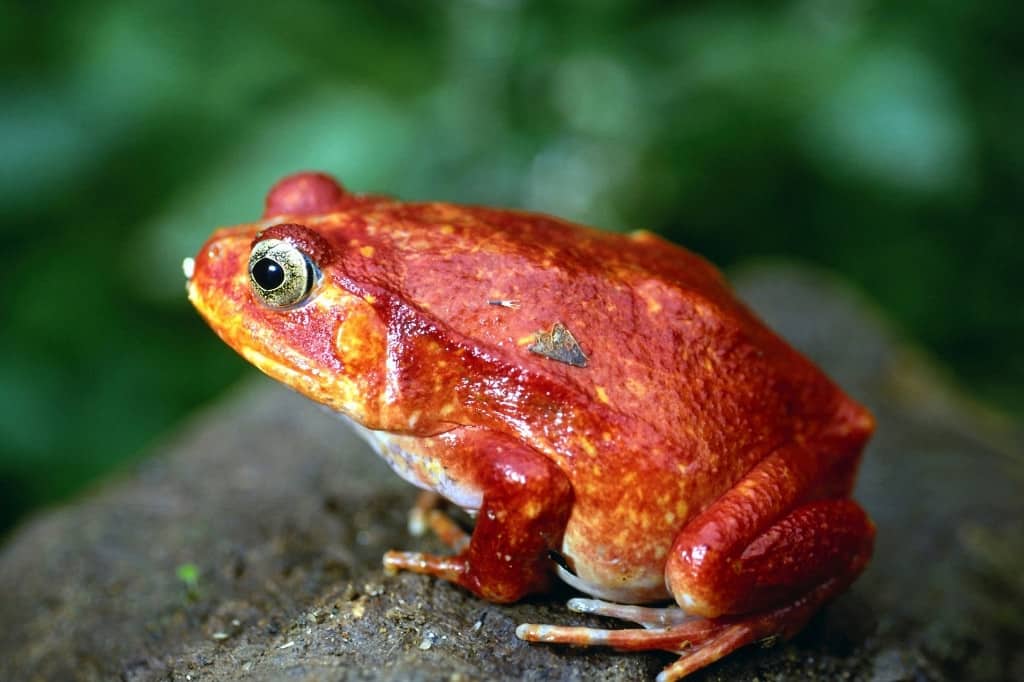
Tomato Frog – The tomato frog, named after its eye-catching color, is a large red amphibian native to Madagascar. The males are yellow-orange, while the females are red-orange.
The coloration warns predators that they are unappealing.
They secrete a chemical that causes the predator’s mouth and eyes to become numb. Furthermore, when threatened, it inflates its body.
Poison Dart Frog
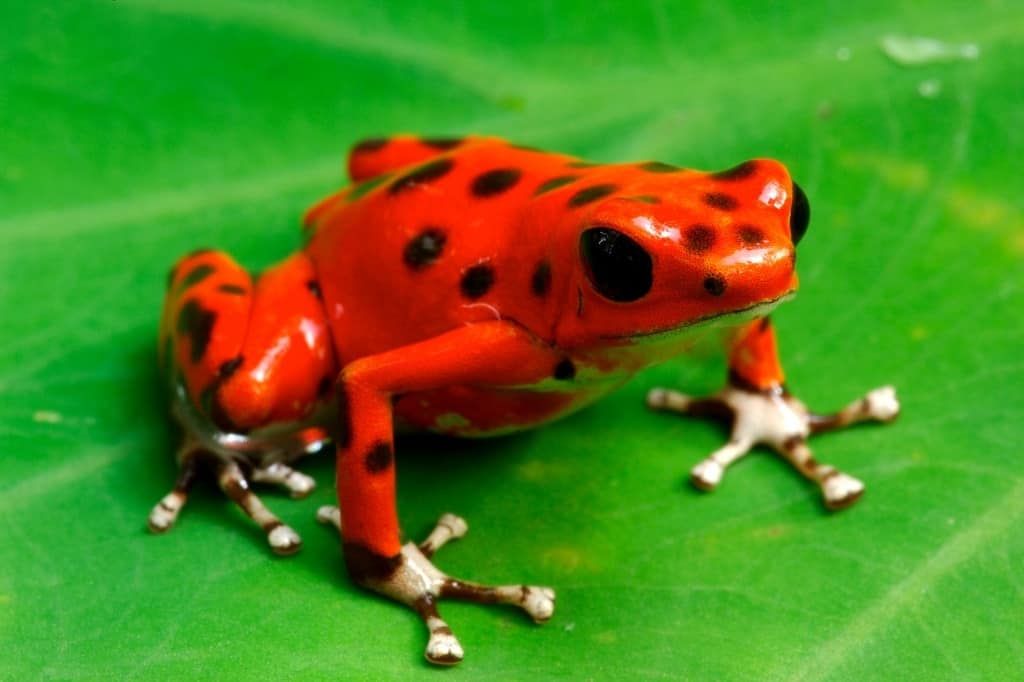
Poison Dart Frog – One of the world’s most venomous frogs is the poison dart frog. They can be red, but they can also be yellow, orange, or even blue.
Predators are warned by these colors, and their venom can kill 20,000 mice. Poison frogs are native to South and Central America’s tropical forests.
Tick
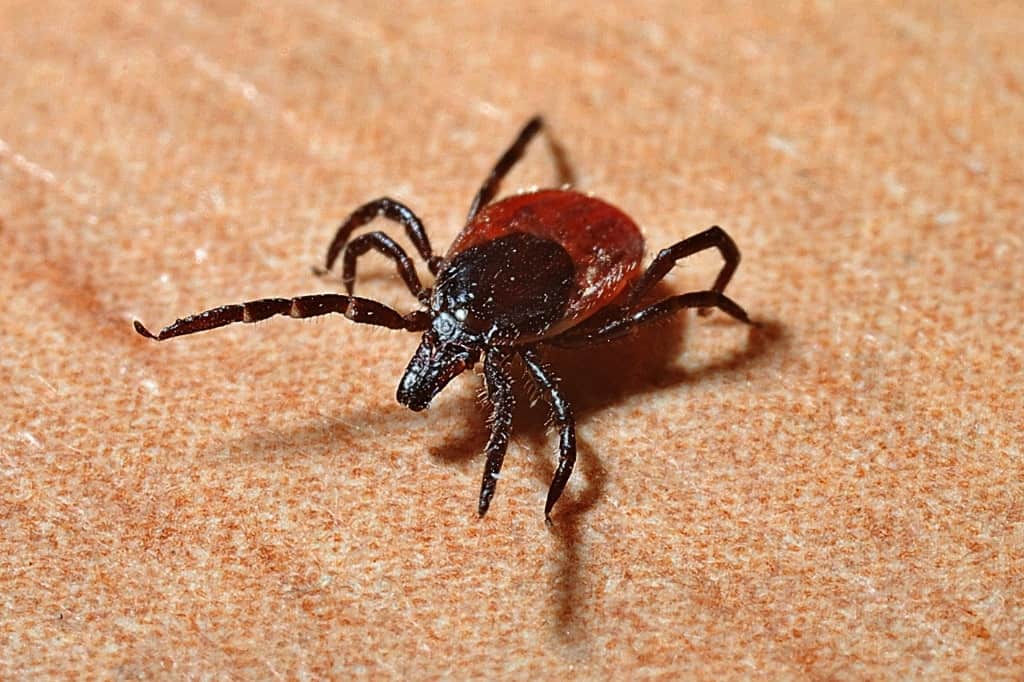
Tick – Because they are about 1 mm in size, they are difficult to see with the naked eye. The majority are red. Goldfish – is one of the white and red things. This reddish goldfish is a popular aquarium fish.
Koi
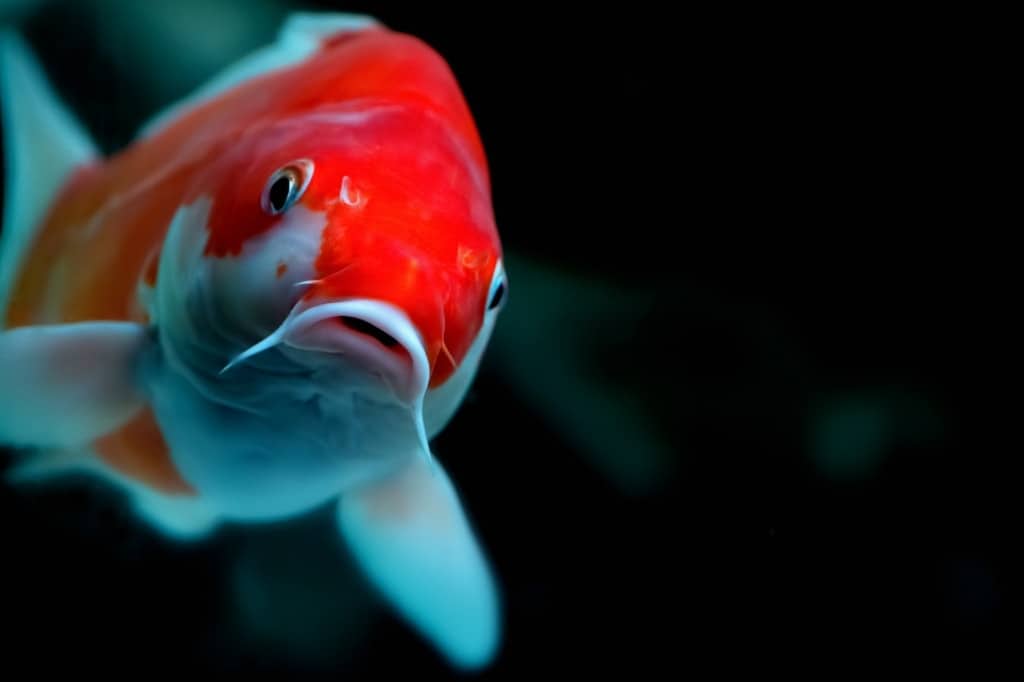
Koi – Koi fish are red with white spots and can grow to be 36 inches long. The Koi fish is classified as an ornamental fish due to its spectacular coloration.
Foods that are red
There are many naturally red fruits, most of which have numerous health benefits.
Red fruits are high in anthocyanins, a flavonoid that helps reduce the risk of several types of cancer.
Furthermore, these are phenolic pigments, which are responsible for the red color of fruits and vegetables. They are powerful antioxidants with anti-inflammatory and antimicrobial properties.
Despite their benefits, the National Cancer Institute study found that 95% of the population does not consume enough red fruits and vegetables. The following is a list of the most popular red fruits.
The best red fruits include nectarines, red berries, strawberries, raspberries, cherries, and apples.
Cherries
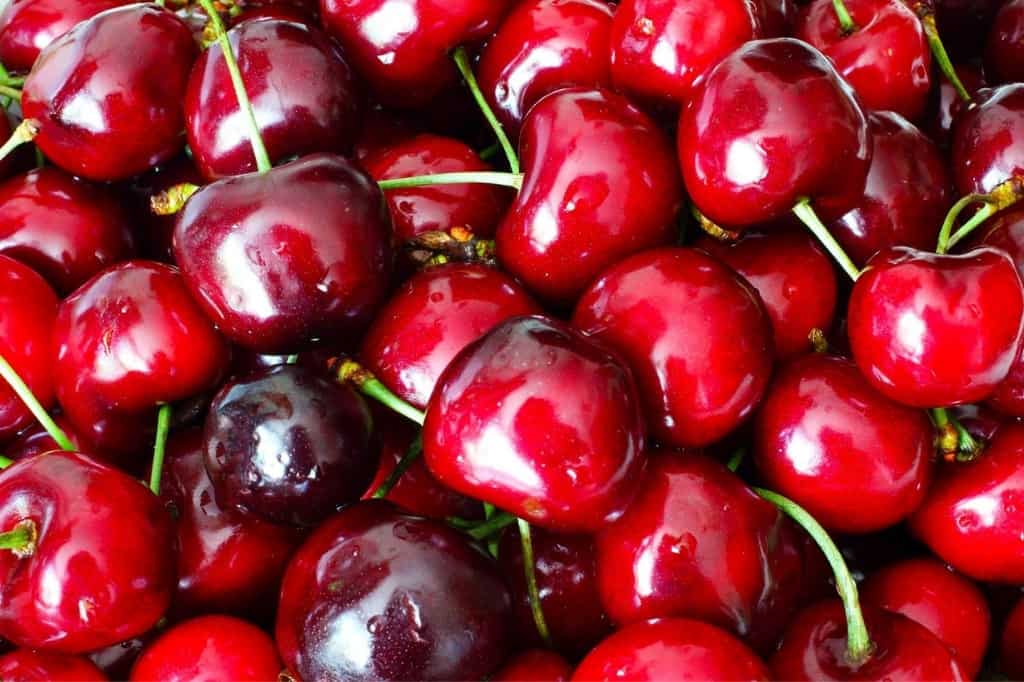
Cherries – Cherries are sweet fruits with numerous health benefits, including a high vitamin C content.
Cherries are red due to a high concentration of antioxidants called anthocyanins, which give them their dark red color.
They are beneficial for a variety of anemias and improve capillary vessel resistance. They also help to prevent cardiovascular disease. Cherries have anti-inflammatory and antibacterial properties, as well as the ability to increase intestinal motility.
Cherries are the world’s most red fruits.
Redberry
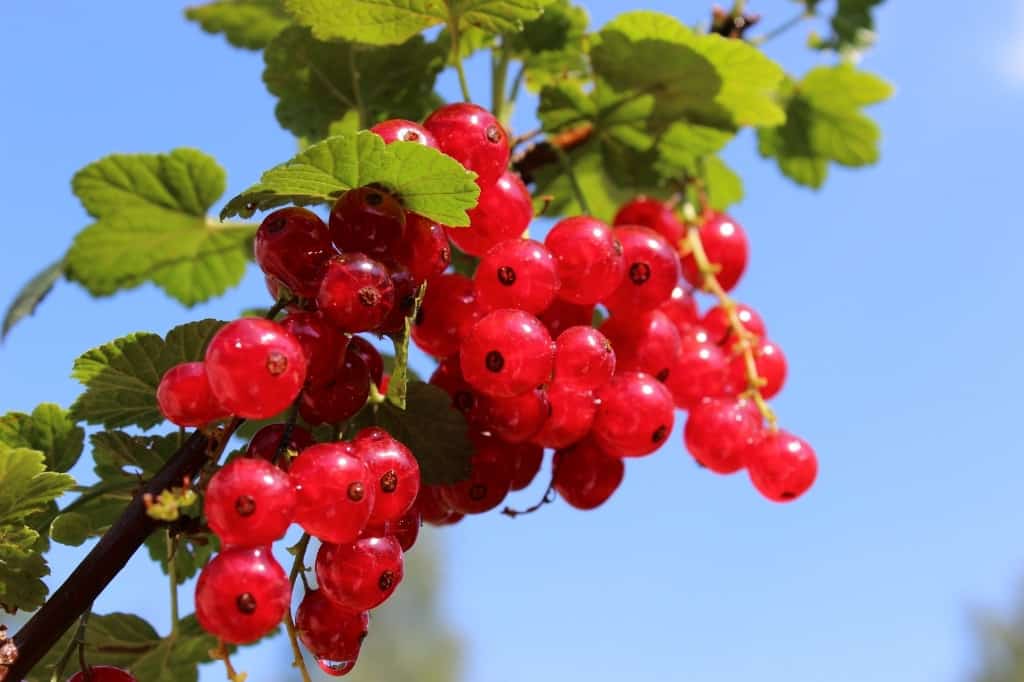
Redberry – Redberries are high in antioxidants and are extremely tasty. They are among the healthiest fruits and grow on a shrub in the buckthorn family.
Redberries, strawberries, and pomegranates are among the most popular red fruits among vegans.
Raspberry
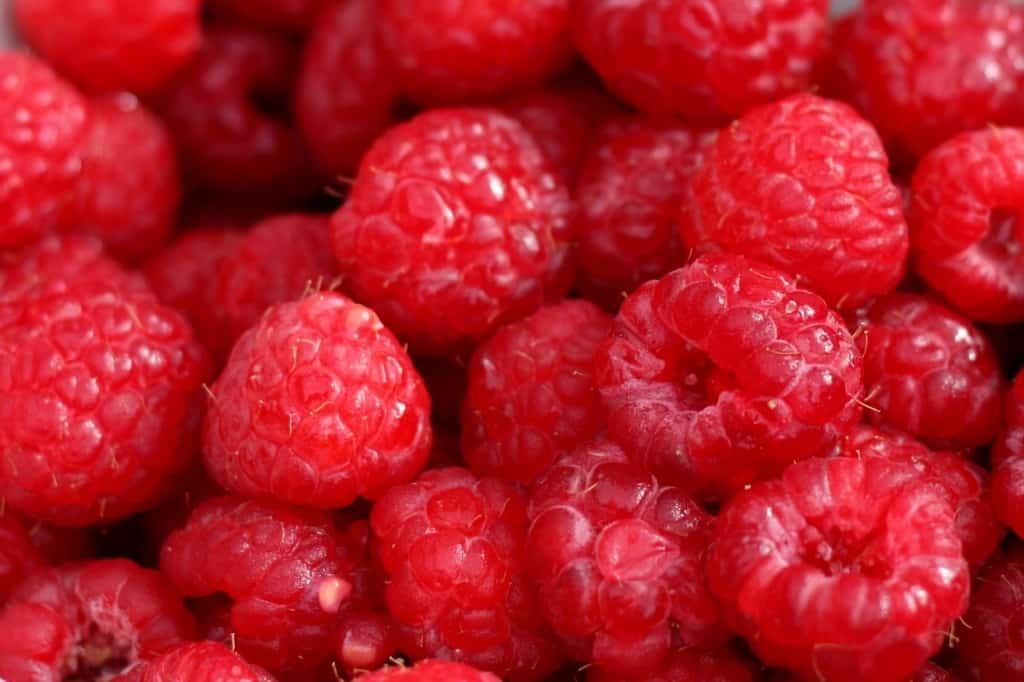
Raspberries – Rosaceae family fruits with a fragrant flavor, raspberries are beneficial for optimal heart function and blood pressure control.
Raspberries, high in omega-3 fatty acids, can help prevent heart and cerebrovascular disease.
Raspberries are red due to their polyphenol profile, which includes high anthocyanin and ellagitannin levels. As a result, they can also be black, purple, or golden.
Strawberry

Strawberry – The popular strawberry is a sweet, bright red fruit that is high in vitamin C and antioxidants. They first appeared in Europe in the 18th century. Strawberries are the world’s second most popular fruit.
Guarana
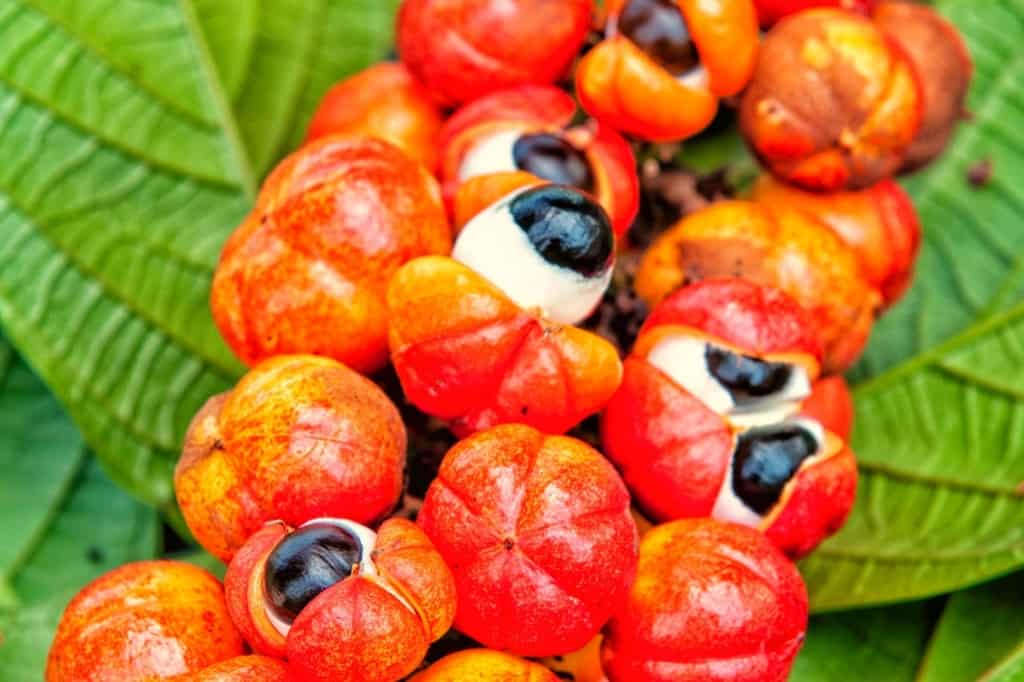
Guarana – Guarana is an Amazonian climbing plant that produces red seeds used in the production of energy drinks. They have four times the caffeine content of coffee beans and can be dangerous in high concentrations.
Holly Berries
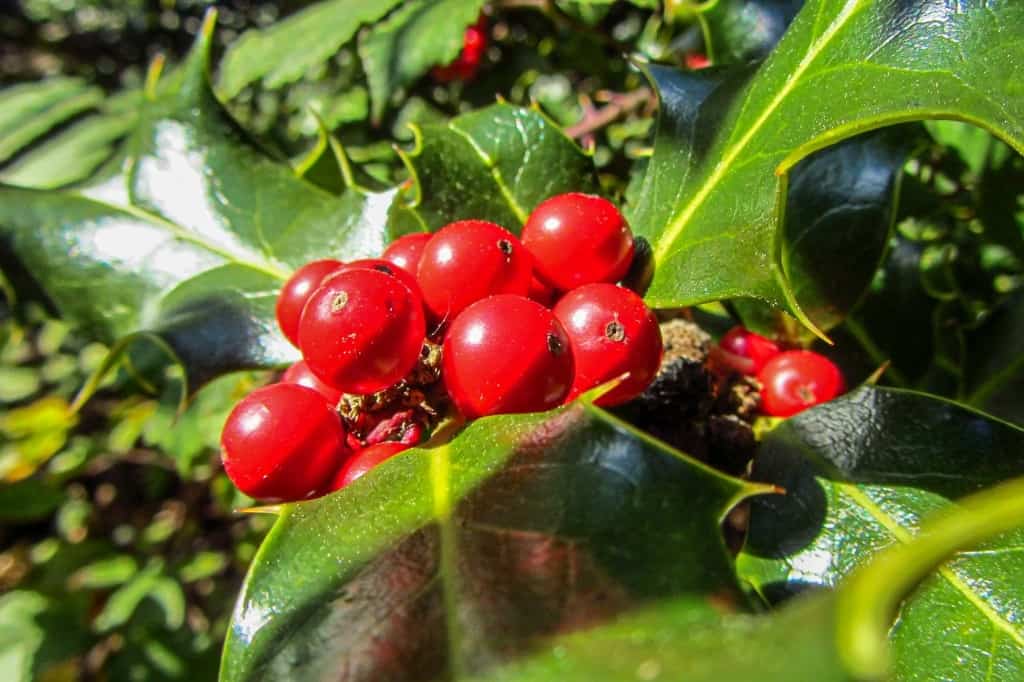
Holly Berries – Holly berries are poisonous to humans and pets, causing vomiting, dehydration, drowsiness, and diarrhea. They are only used for decoration. If you have small children, keeping them in the house is not advisable.
Cranberry

Cranberry – Rich in nutrients and antioxidants, cranberries can reduce the risk of urinary tract infections and boost the immune system. Cranberries are the sourest red fruits.
They are also thought to help prevent certain types of cancer. Cranberries are initially green and turn red when.
Apple
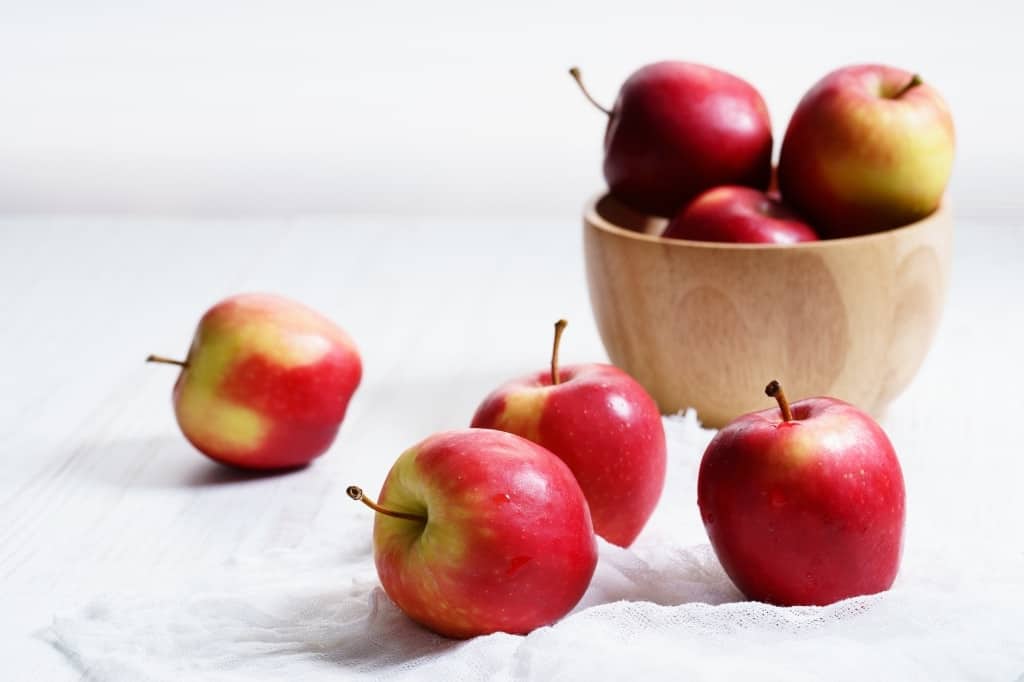
Apple – Red apples are delicious fruits with red skin. The most common variety is the Red Delicious, which was discovered in Madison County (Iowa) in 1872.
It contains more antioxidants than other varieties. Green apples are more nutritious than red apples because they contain more vitamins A, B, C, E, K, potassium, and iron.
Nectarine
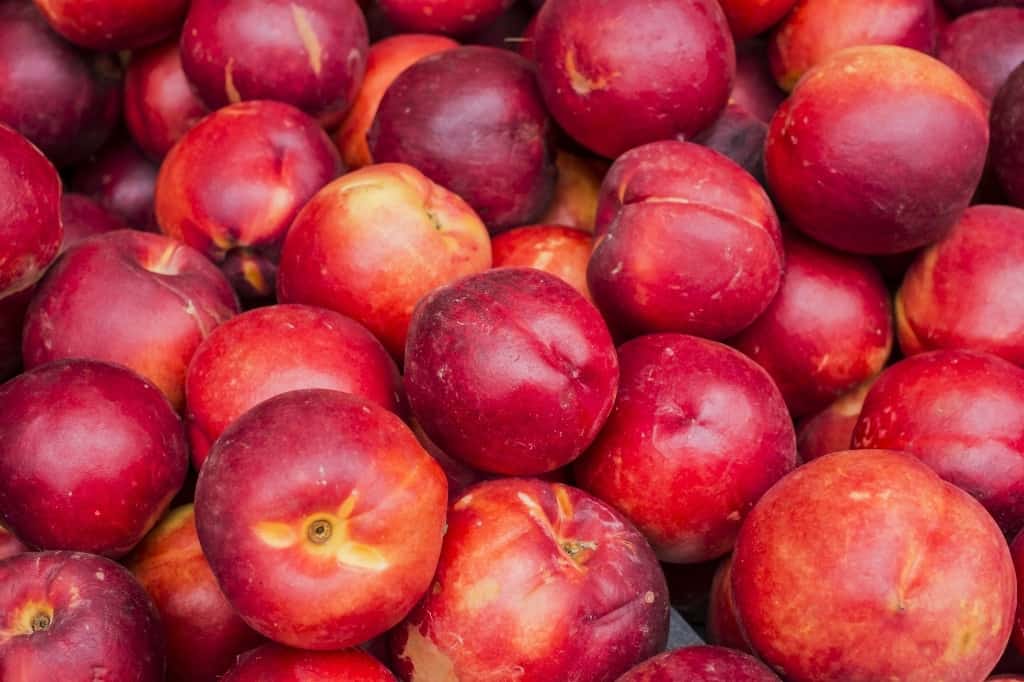
Nectarines – Sweet and aromatic fruits, nectarines are good for your health because they contain antioxidants. In addition, they are high in vitamins and minerals. They are a type of stone fruit, similar to peaches, and are related to the rose family.
The color of nectarines ranges from red to reddish-orange. Because of their high vitamin A and C content, nectarines are among the most popular red fruits.
Pomegranate

Pomegranate – It is a deliciously sweet fruit with a thick skin. Pomegranate has three times the antioxidants of green tea and has a powerful anti-inflammatory and anti-aging effect.
It can also aid in the reduction of blood sugar levels. Excessive consumption, on the other hand, can result in nausea, vomiting, and abdominal pain.
Tomato

Tomato – Tomatoes are the juicy fruits of a perennial climbing plant native to North and Northern South America. Tomatoes contain antioxidants and vitamin C (beta-carotene, lutein, and lycopene). Tomatoes are more nutritious when eaten raw.
In addition, they are said to protect the heart and prevent neurodegenerative disorders. This red vegetable is widely regarded as the most popular on the planet.
Tomatoes are classified as fruit because they grow from a flower’s fertilized ovary. Farmers, however, disagree with botanists.
Chili
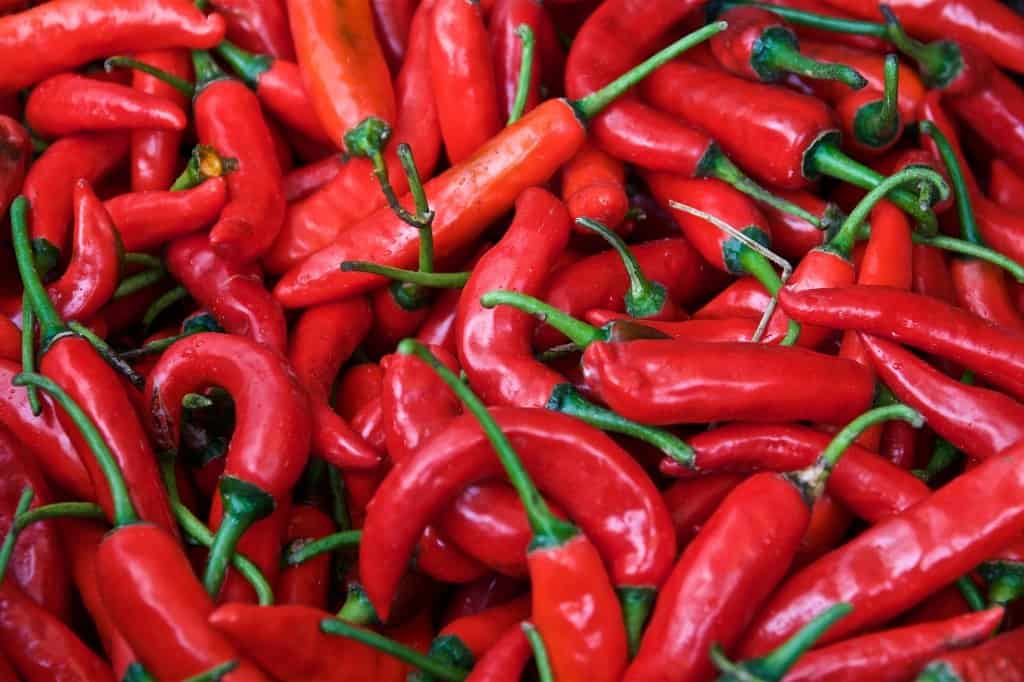
Chili – Chili is a hot pepper that is used in both cooking and medicine. It is high in capsaicin, an alkaloid that has anti-inflammatory properties and may reduce the risk of heart disease.
It can also help with weight loss plans. Chilli peppers are red due to the presence of carotenoid pigments, particularly capsanthin, which is unique to Capsicum fruits.
Acerola
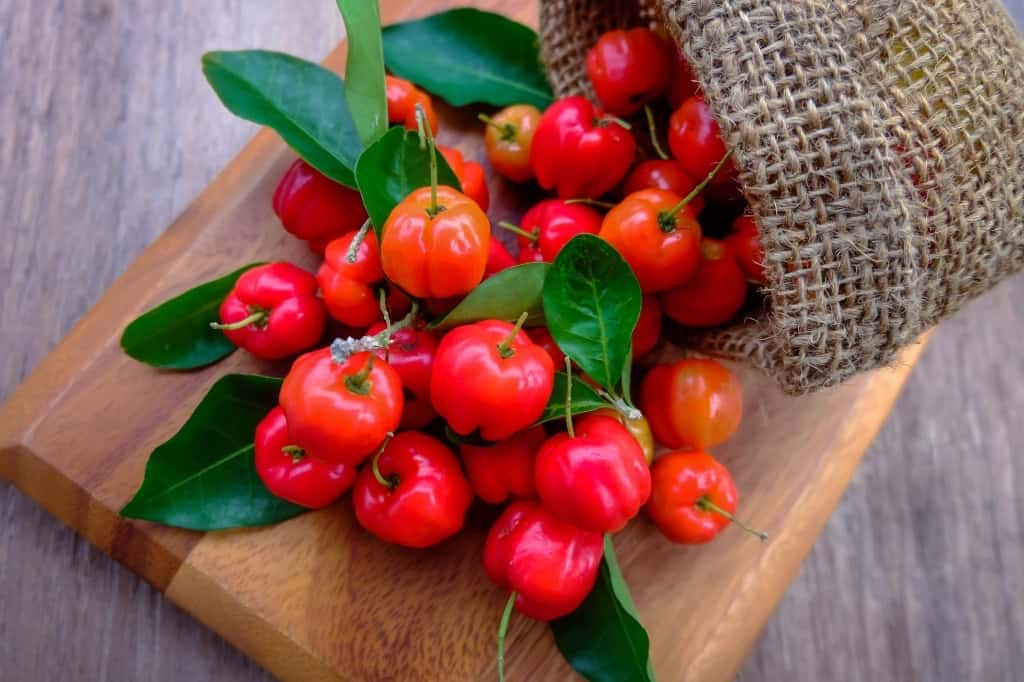
Acerola – Acerola is one of the fruits with the highest vitamin C content. Vitamin A, thiamin, riboflavin, and niacin are also present. It is indigenous to Central America and Brazil. Therefore, it is most likely one of the most vitamin C-rich red fruits.
Urucum
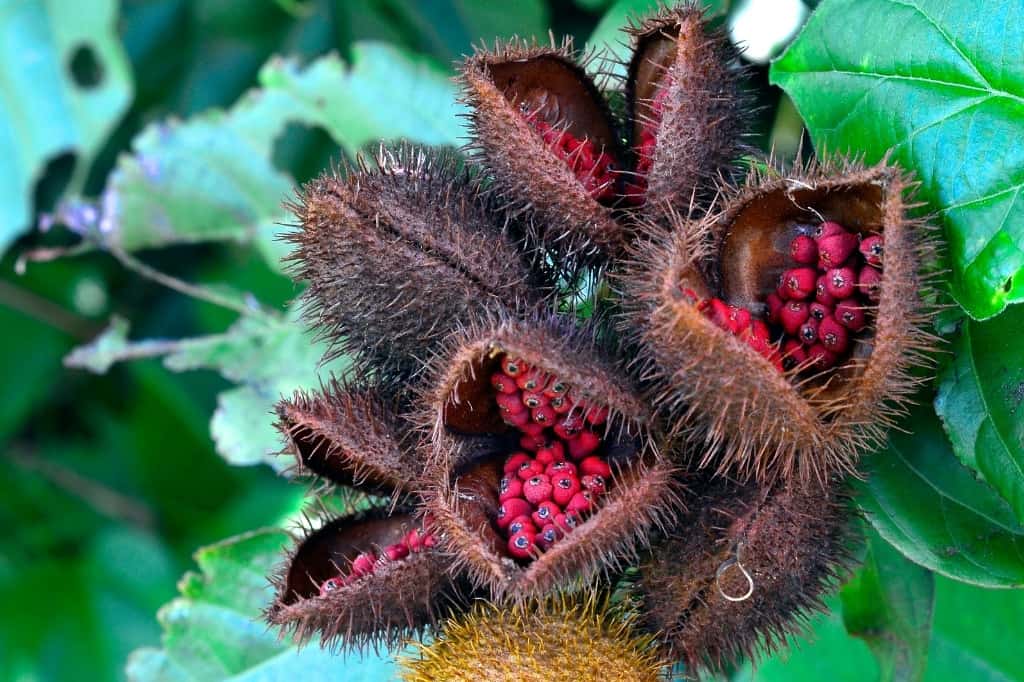
Urucum – Also known as Achiote, this Amazon rainforest tree produces seeds that contain 100 times more provitamin A than carrots.
It is used as a source of annatto, a natural orangish red spice with numerous skin and body benefits. The seeds of this tree were used to dye things red by Indians.
Cashew Fruit
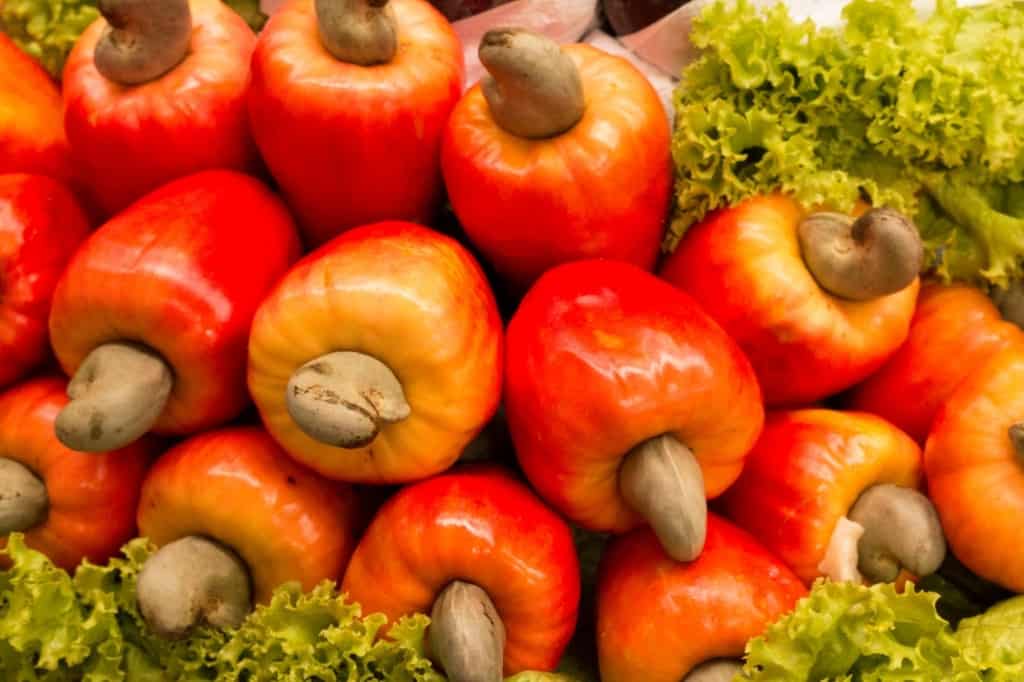
Cashew Fruit – A light reddish fruit, the cashew fruit is also known as Maraón in Central America. The pulp of this fruit is rich and succulent, with a delicious, slightly acidic flavor.
Because it is high in minerals (calcium, magnesium, potassium, phosphorus, and iron), the WHO considers it a fruit that can help regulate blood pressure and strengthen bones.
Radish
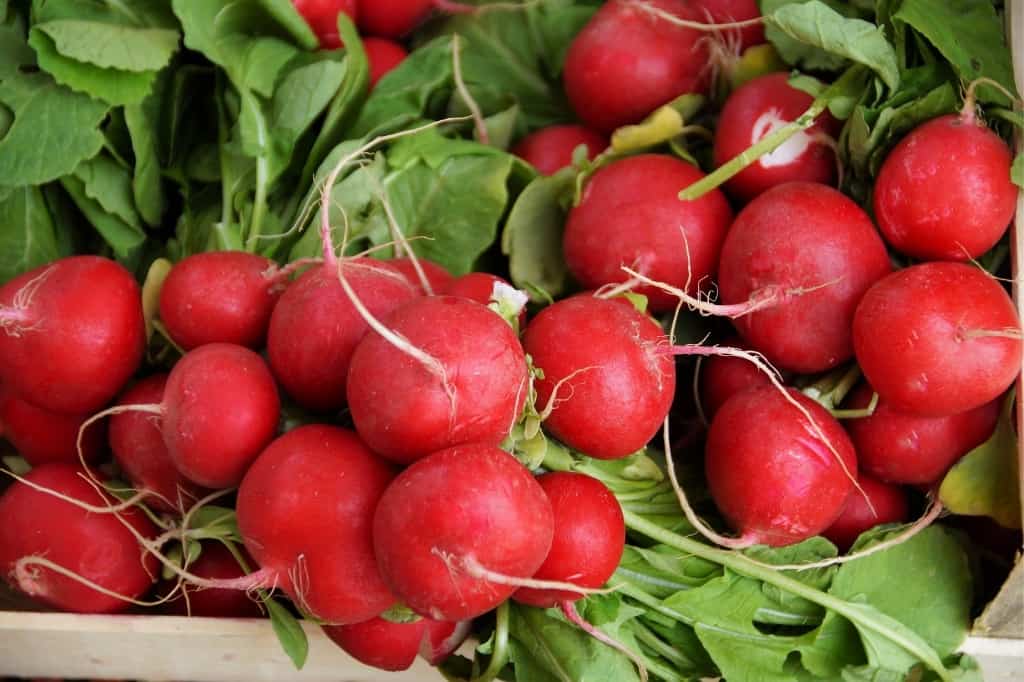
Radish – Radish is a sweet-tasting edible root vegetable. Radishes are classified as a superfruit because they are low in calories and high in nutrients and antioxidants that can help prevent diabetes.
Red Meat
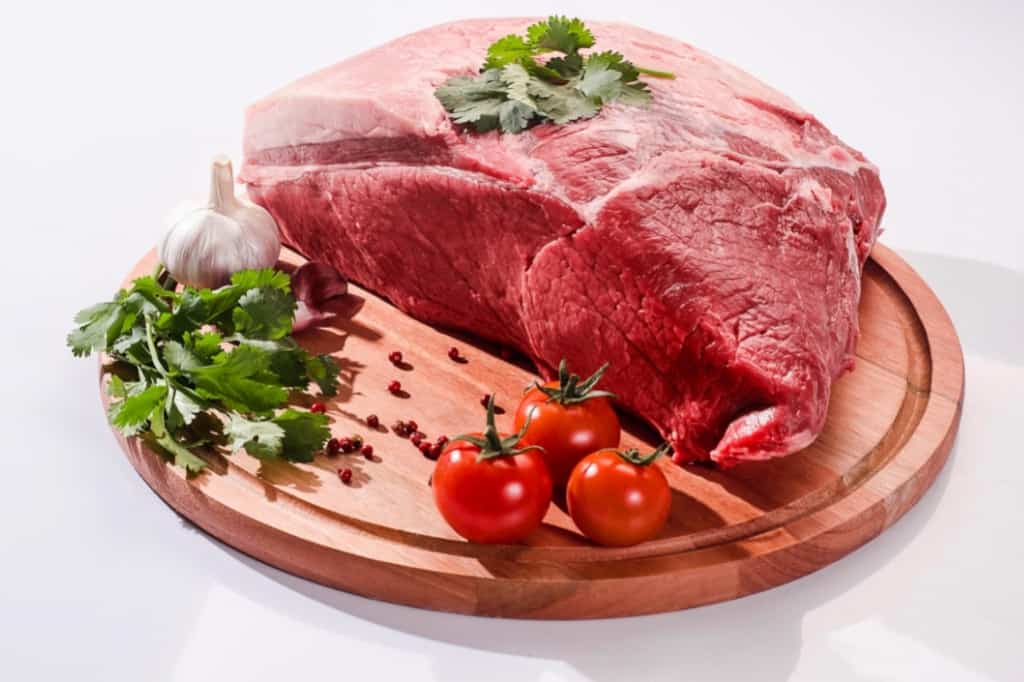
Red Meat – One of the most contentious red foods is red meat. It contains iron, potassium, vitamin B12, and zinc. Furthermore, it is a good source of protein. Red meat, on the other hand, contains carnitine, which may increase the risk of heart disease.
Meat is red due to the presence of myoglobin, a highly pigmented protein that stores oxygen in muscle cells. The darker red the meat, the more myoglobin there is at the cellular level.
This red meat is the most widely consumed red food in the world.
Watermelon

Watermelon – Watermelon is well known for its delicious taste as well as its ability to keep you hydrated. It is also high in potassium, magnesium, and vitamin A and is low in calories.
It is one of the most delicious red-fleshed fruits. It is thought to have been domesticated for the first time around 4000 years ago in North-East Africa.
Lychee
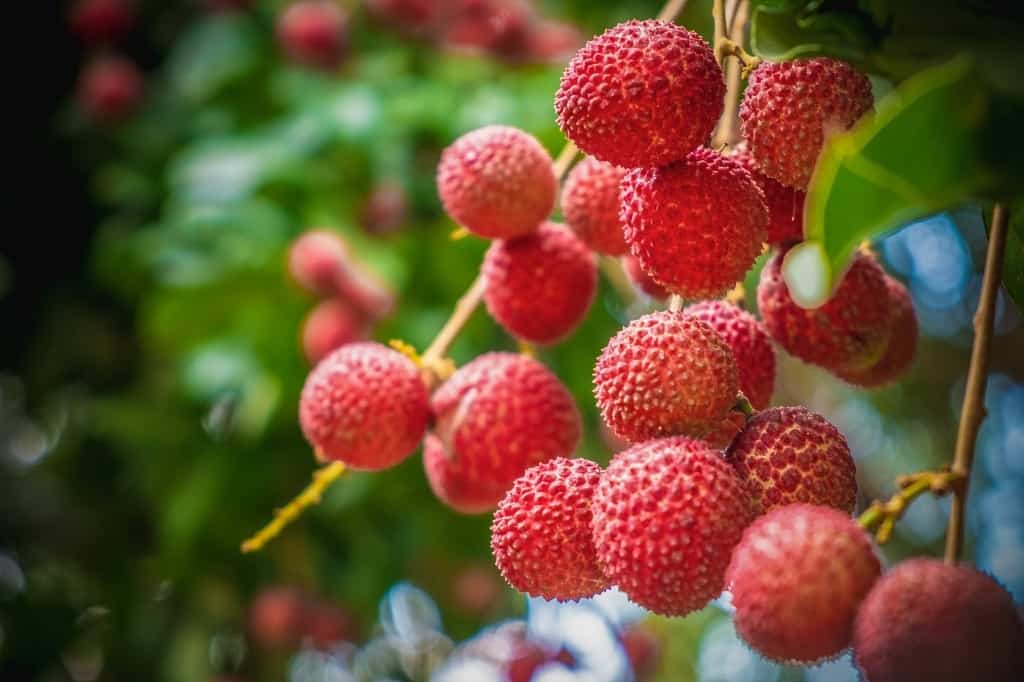
Lychee – A tropical fruit with a red, bumpy skin that originated in China. Because of its fragrant pulp, it is popular among smoothie, juice, and cocktail enthusiasts.
Red Bell Peppers
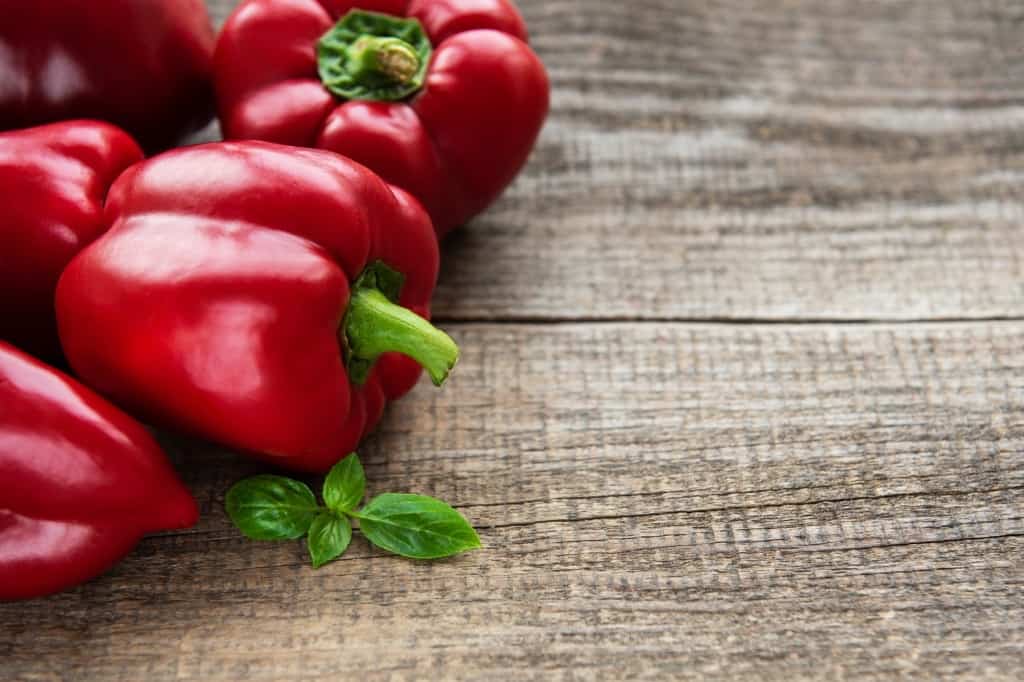
Red bell peppers – This is the fruit of the Capsicum annuum plant. Red Bell Peppers are high in vitamin C, which aids iron absorption from the intestine.
They are also high in vitamin A, iron, and fiber. Their antioxidant properties are said to protect against certain cardiovascular diseases. Because of the high concentration of lutein, violaxanthin, capsanthin, capsorubin, and beta-carotene, the peppers can be red, yellow, or orange in color.
Beet
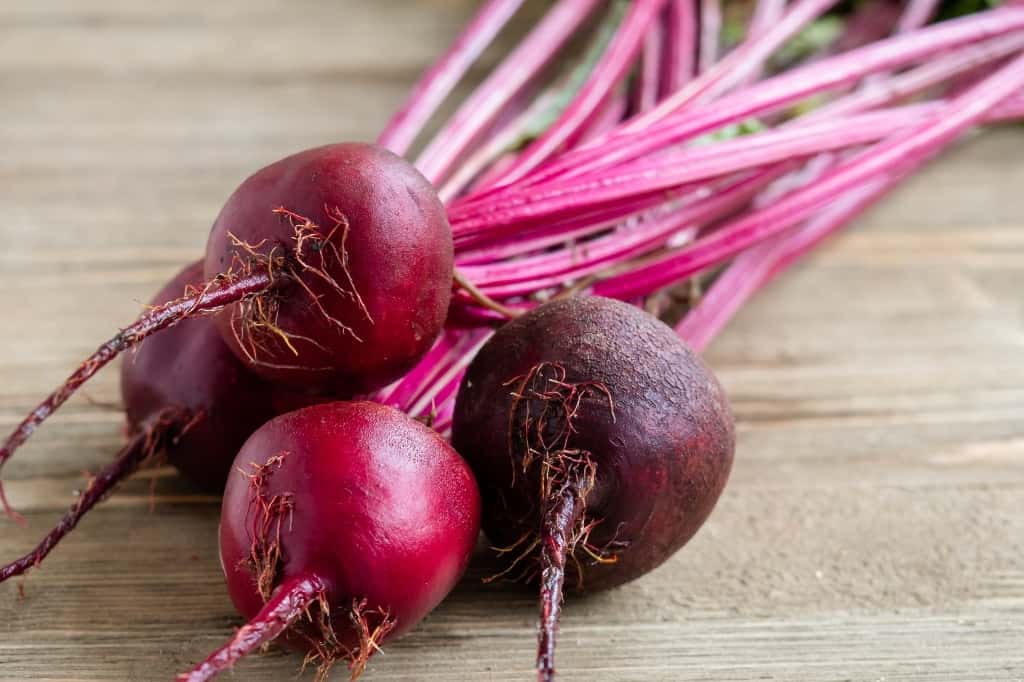
Beets – According to the USDA, beets have the highest antioxidant content of any red vegetable. It’s also one of the most nutritious red vegetables.
Red plants
Flowers are often red as a result of a popular plant pigment that comes in the form of anthocyanins. Here is a list of red plants and flowers you can find in nature.
Red Rose
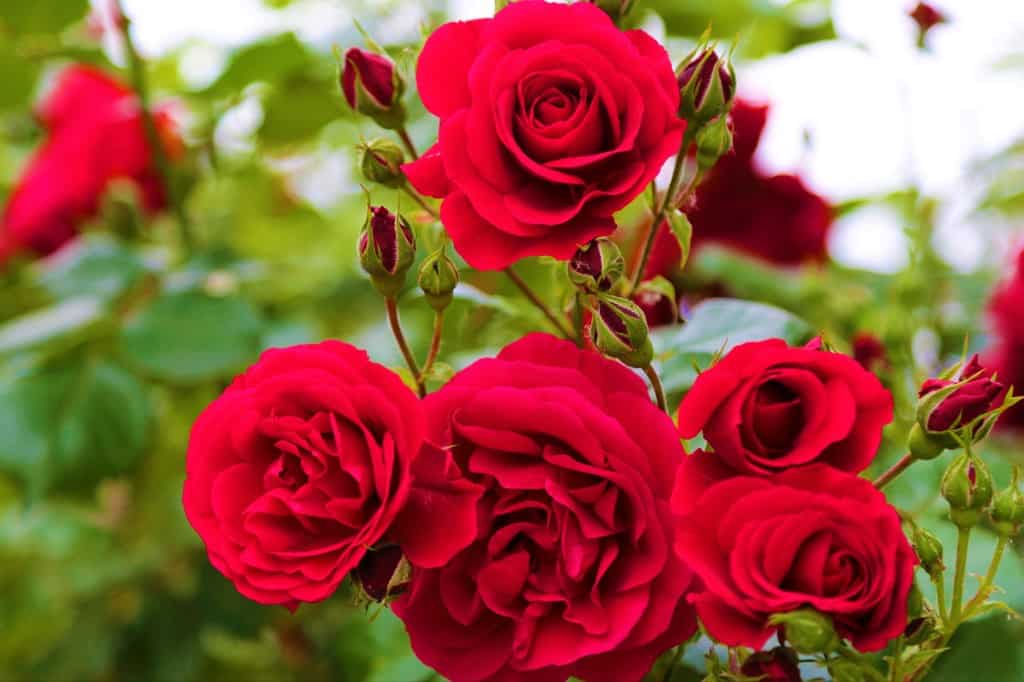
Red Rose – Symbol of love and beauty, the red rose is an ornamental perennial plant, in the form of a shrub. The presence of anthocyanins, a natural dye from the polyphenol class, is responsible for the rose’s red color.
Rose petals contain high levels of antioxidants and volatile oils. Rose petals can thus be used to make:
- essential oils
- rose jam
- infusions and teas
- rose liqueur
- rose petal honey
- rose vinegar
Zinnia
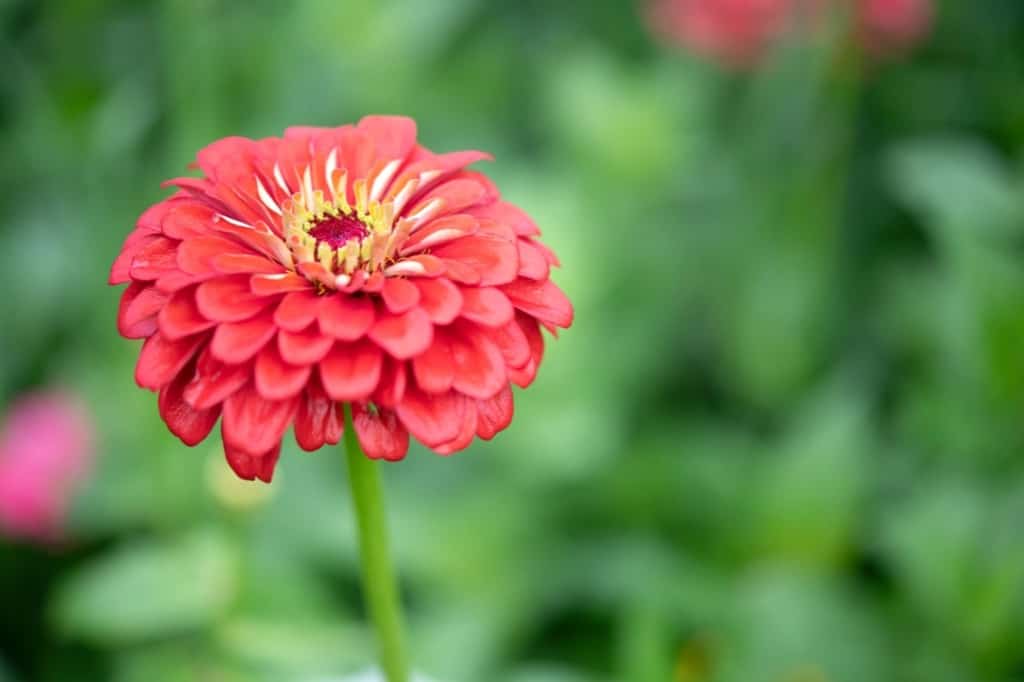
Zinnia – It’s an annual plant that is native to the United States and Mexico. Zinnias thus produce flowers only once. Zinnias, as a result, only produce flowers once. They are well-known for their color variations in red, orange, yellow, and purple.
Amaryllis
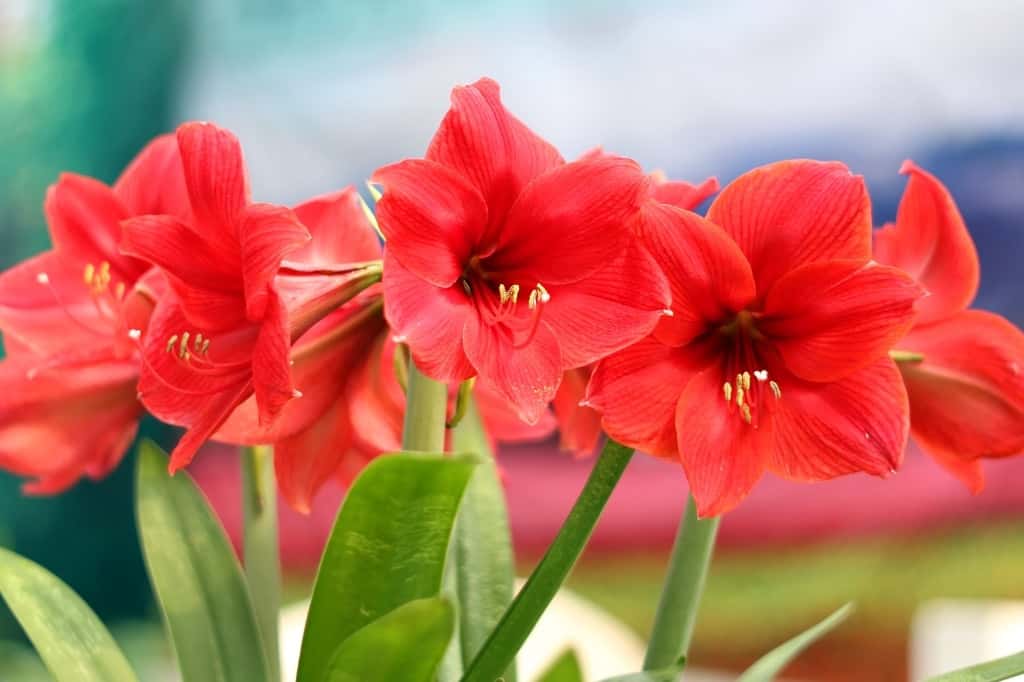
Amaryllis – native to South Africa, amaryllis plants bloom once a year for 6-8 weeks and can live for up to 75 years. Amaryllis is one of the most beautiful bright red flowers.
Chrysanthemum
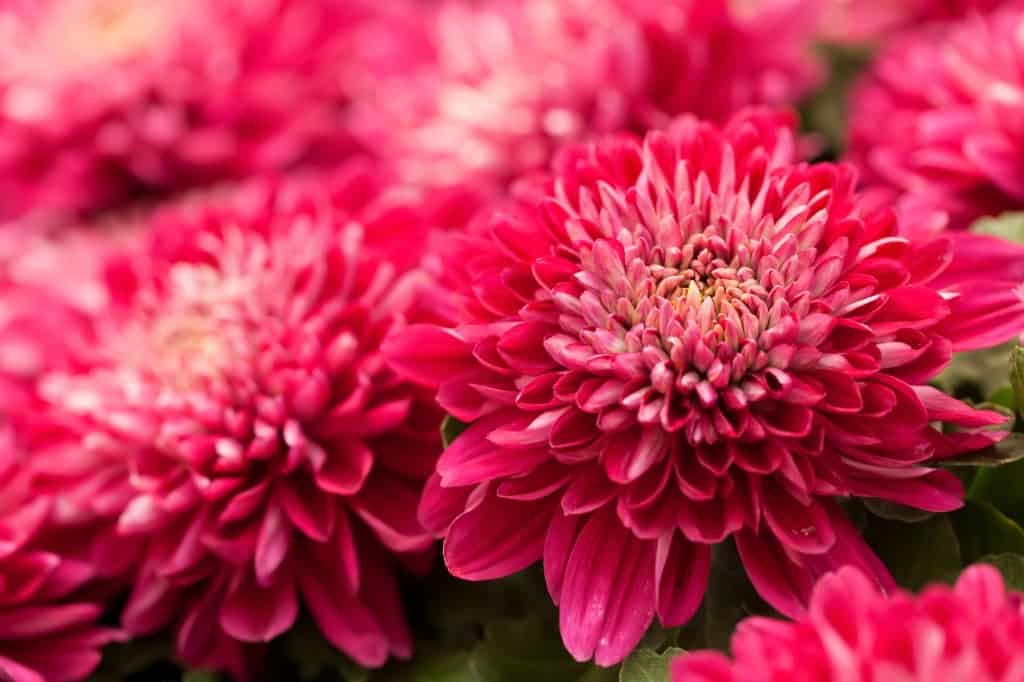
Chrysanthemum – Also known as chrysanths, chrysanthemums are a genus of 40 flowering plants native to East Asia and Northeastern Europe. Red chrysanthemums represent love and longevity.
Red Dahlia
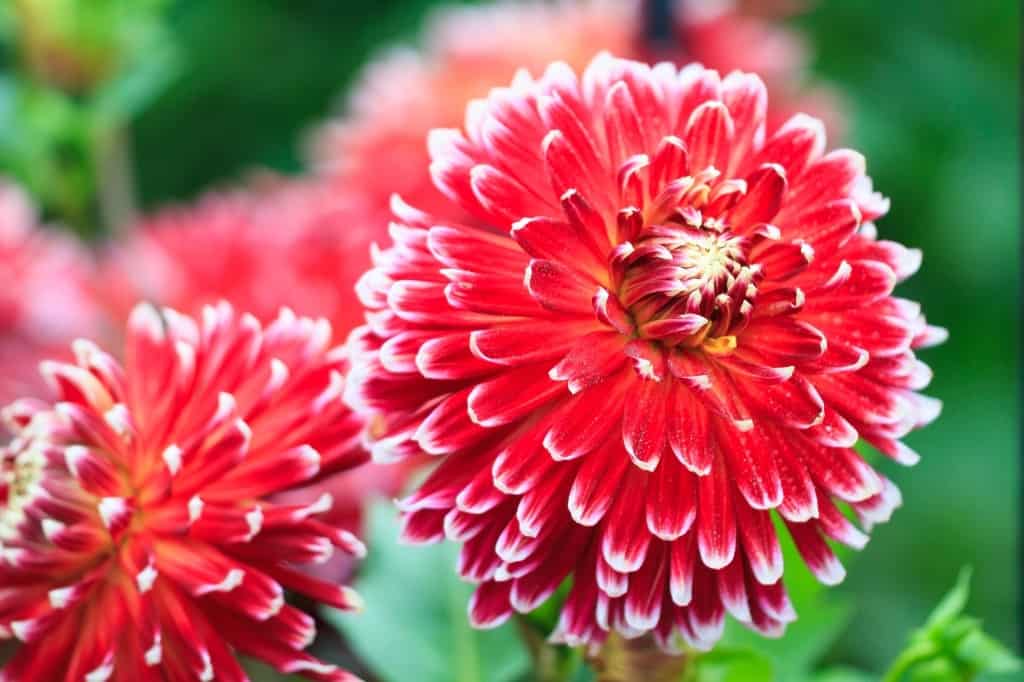
Red Dahlia – Possibly the most spectacular red flower, red dahlias are eye-catching due to their bright red color and shape.
They are native to Mexico but are now grown all over the world due to their showy flowers. The red Dahlia is a bright red flower that looks like a cactus. It is one of the most lovely red flowers.
Anthurium
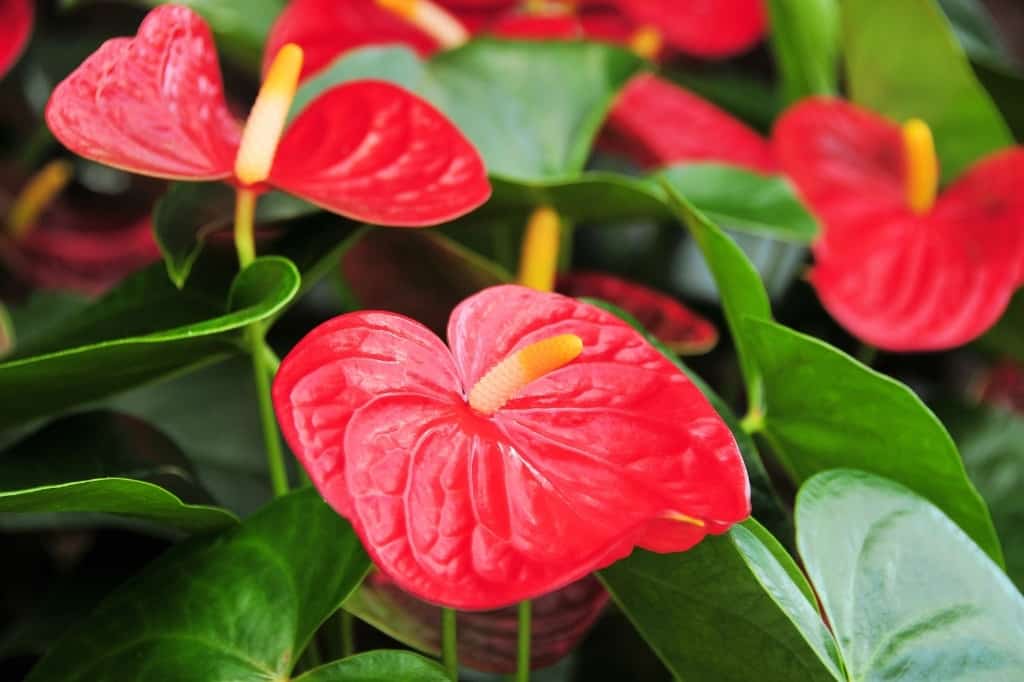
Anthurium – Also known as the “flamingo flower,” Anthurium is native to the tropical forests of South and Central America. This decorative plant is a bright red with pinkish-red undertones.
Begonia
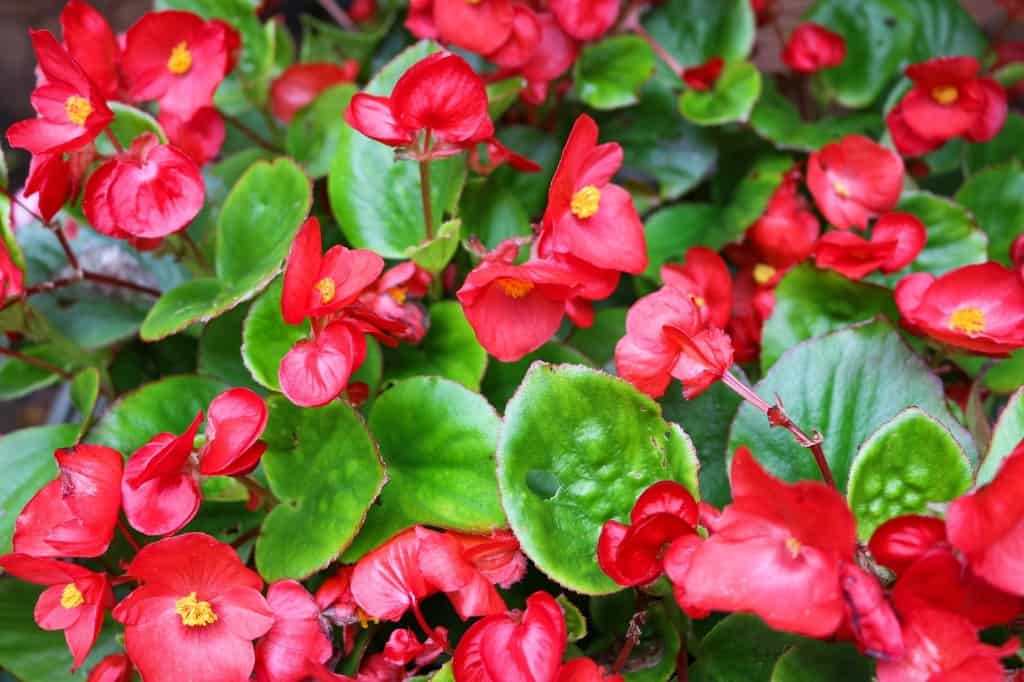
Begonia – These gorgeous clusters of light pink to pinkish red flowers bloom from early summer until the cold weather arrives.
Penta
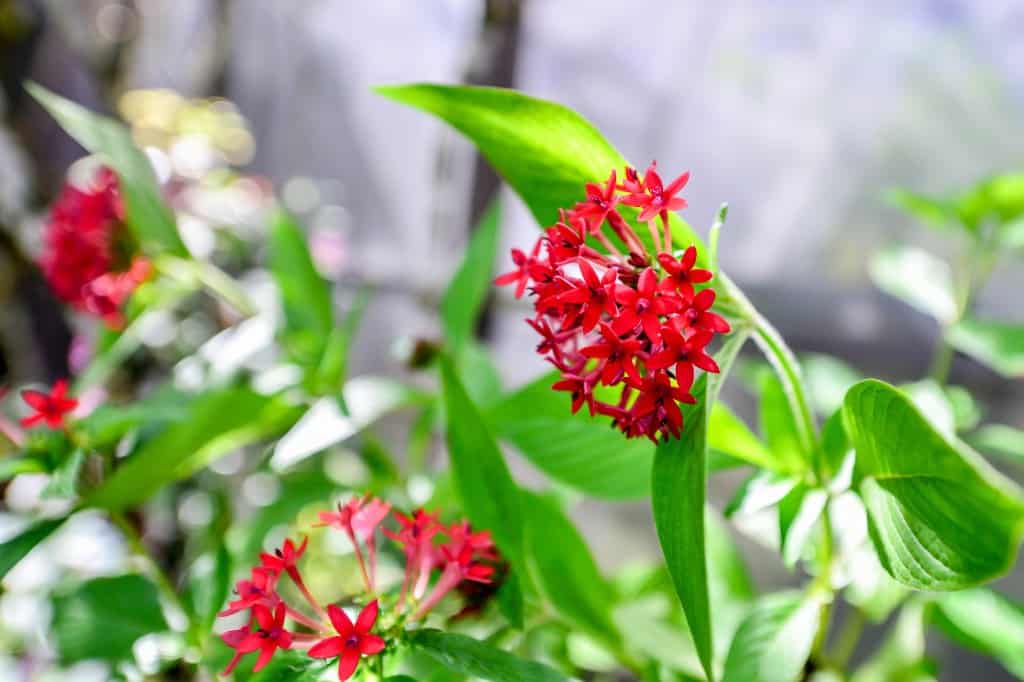
Pentas – One of the best at attracting pollinators, pentas bloom all summer long, even in low humidity. Its distinctive star-shaped flowers are known as Egyptian stars.
Columbine
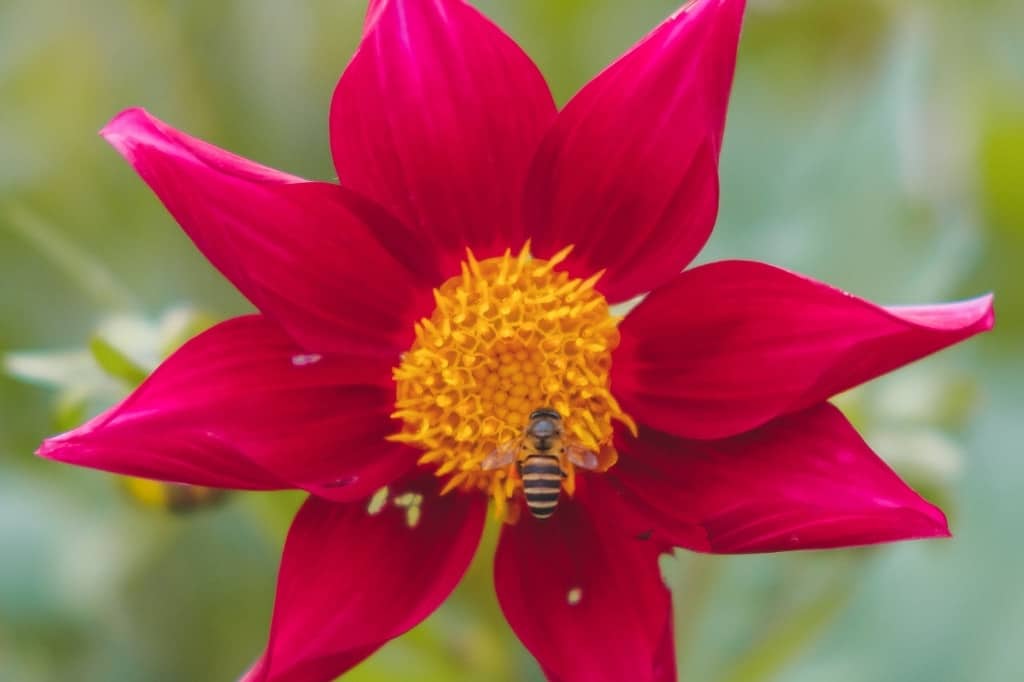
Columbine – The flowers of columbine bloom in various hues of red, pink, purple, yellow, and blue. They prefer shady spots in hotter climates and sunny spots in cooler climates.
Gerbera Daisy
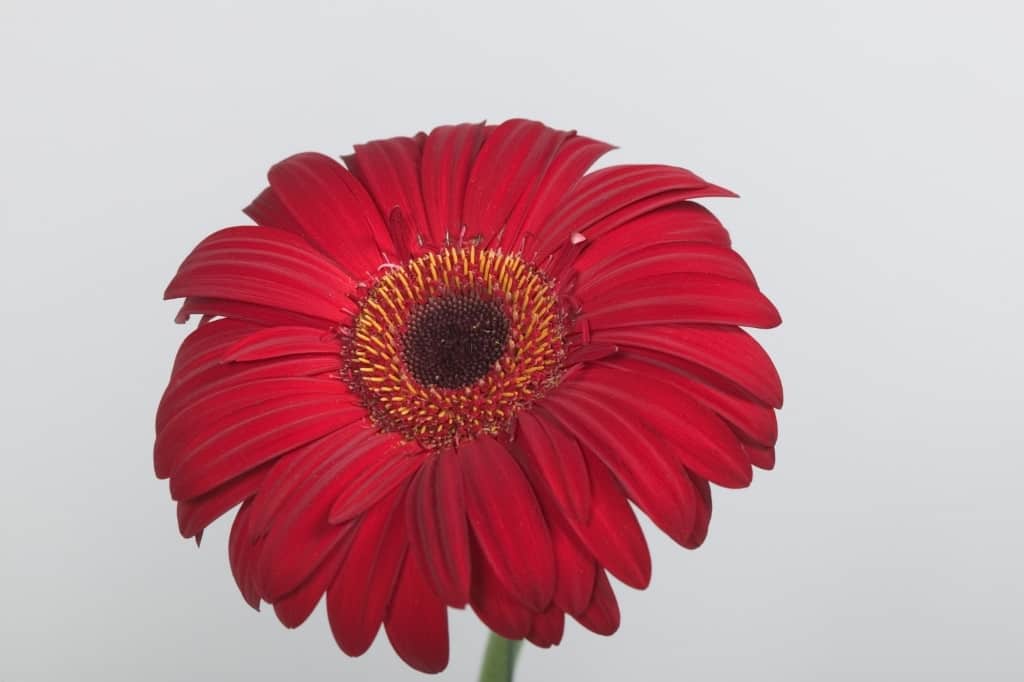
Gerbera Daisy – Gerbera daisies are bright and cheerful daisy-like flowers native to South Africa. They are perennials that can also be grown as annuals. Gerbera daisies are available in many colors, including red, yellow, white, pink, orange, and lavender.
Anemone
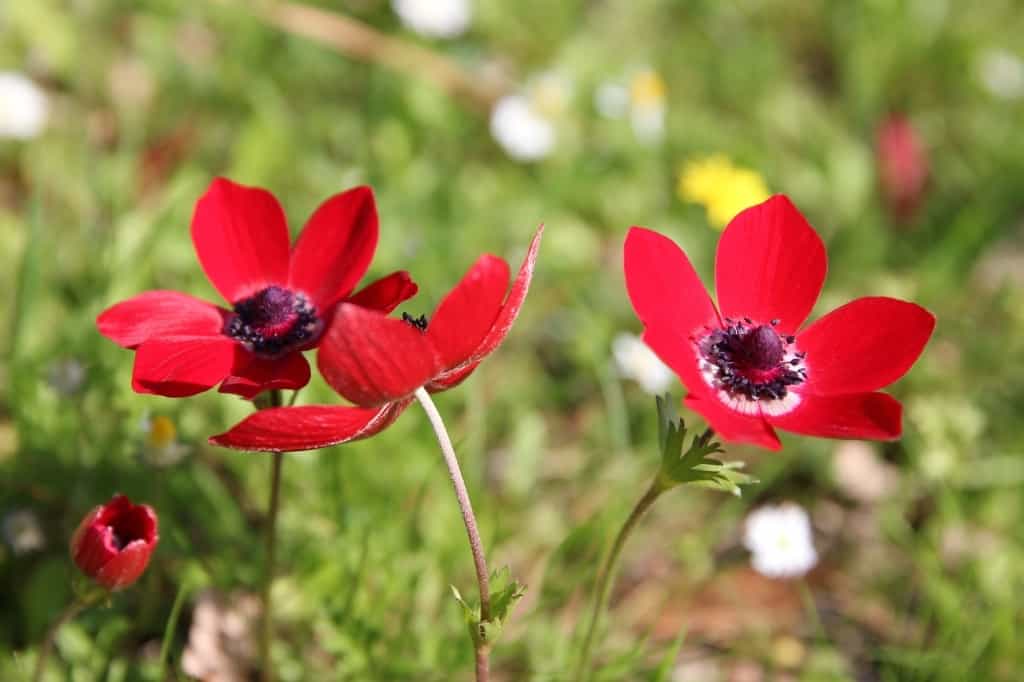
Anemones – These flowers are indigenous to temperate climates and mountainous areas near the Mediterranean. Anemones bloom in bright red shades in the spring and summer. Its flowers have sepals rather than petals.
Geranium

Geranium – These sun-loving plants require at least 4-6 hours of sunlight daily. Red Geranium flowers are dark or pure red-orange with a brick undertone.
Camellia
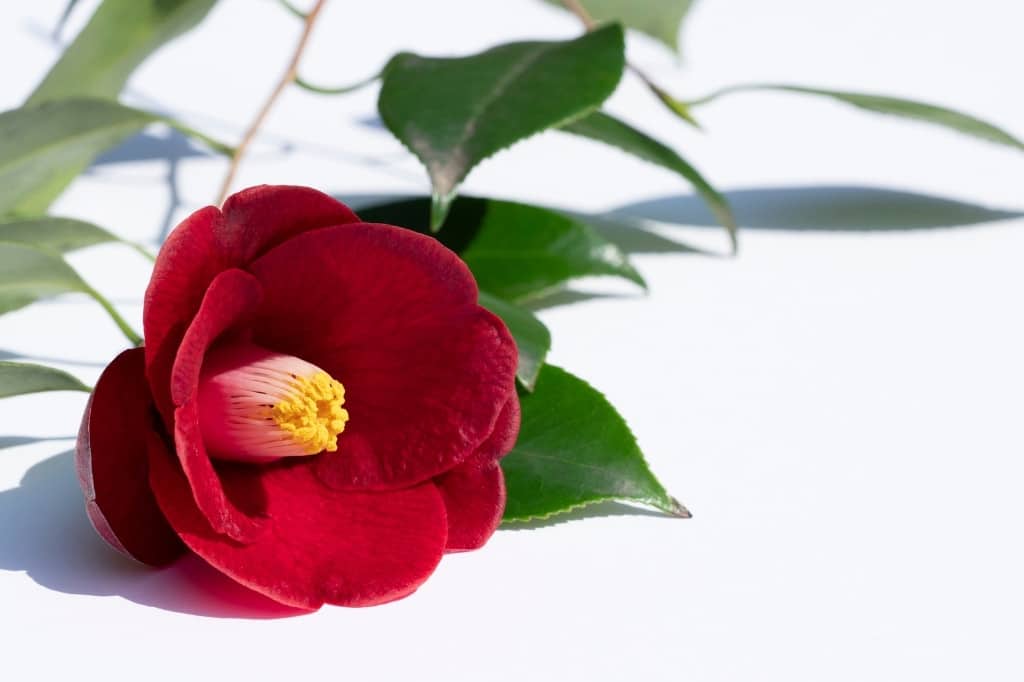
Camellia – This is a particularly lovely and elegant plant. Camellia is a beautiful evergreen shrub with rose-like red to pink flowers. So you will find this flower on the pink things as well.
Freesia
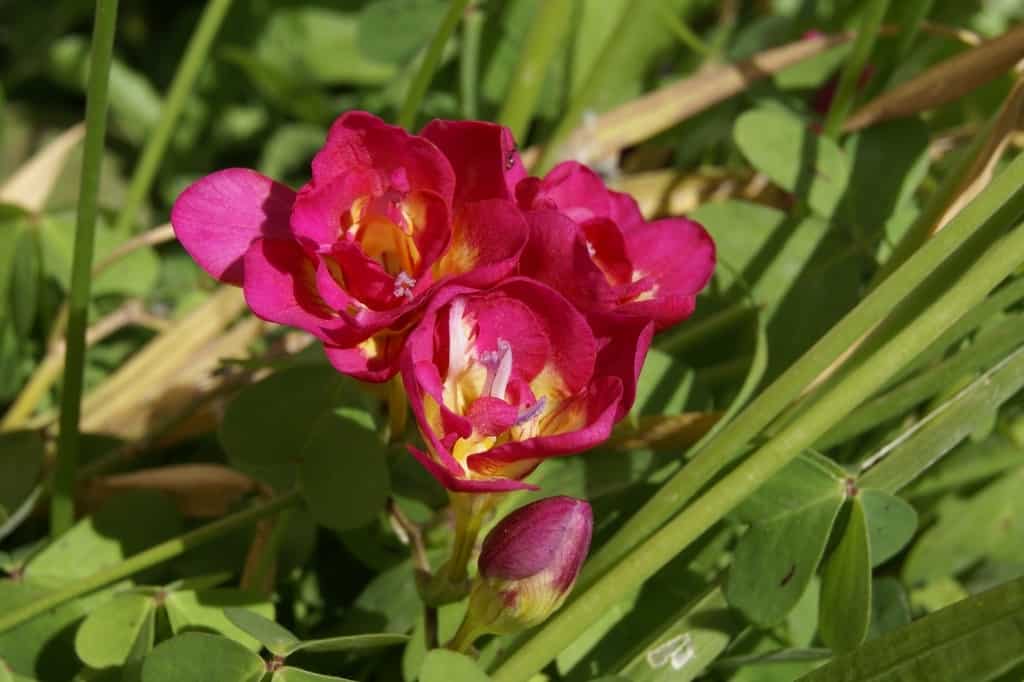
Freesia – Ten weeks after planting, freesia blooms. Its flowers last for 6 weeks after they bloom. Freesia has various hues, including white, cream, yellow, orange, red, pink, lavender, mauve, and even purple. Red freesias are alive and cheerful.
Red Lily
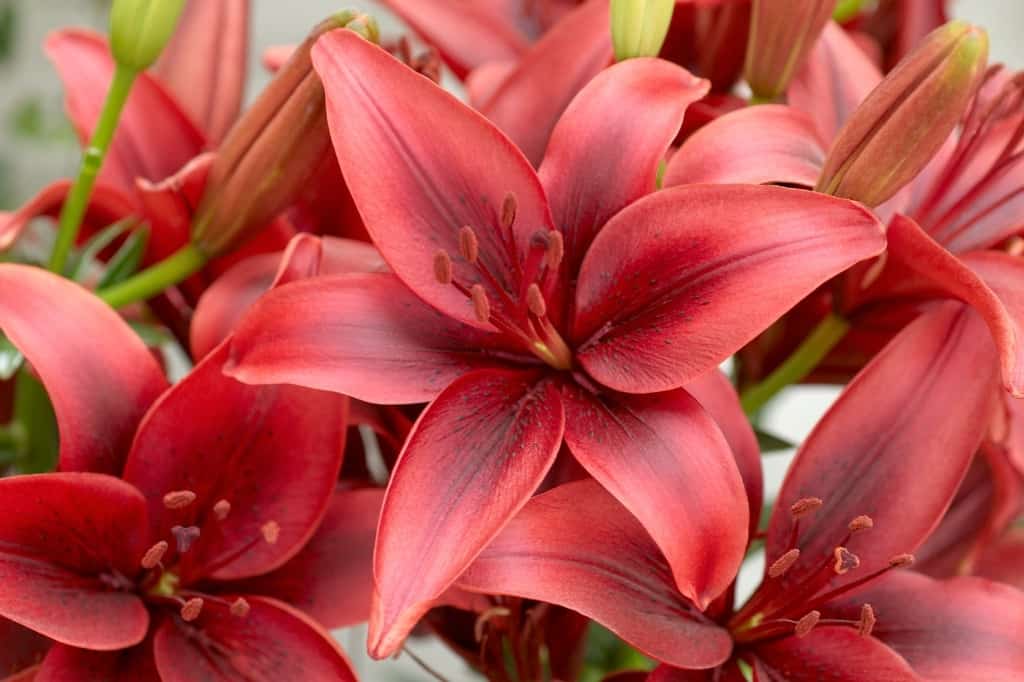
Red Lily – Known as Lycoris radiata, red lily is an Amaryllis plant that was native to Asia before becoming naturalized in the southeastern United States.
The vibrant red flowers bloom in late August and continue until October. Unfortunately, this flower contains lycorine, which can be slightly toxic to pets.
Hibiscus
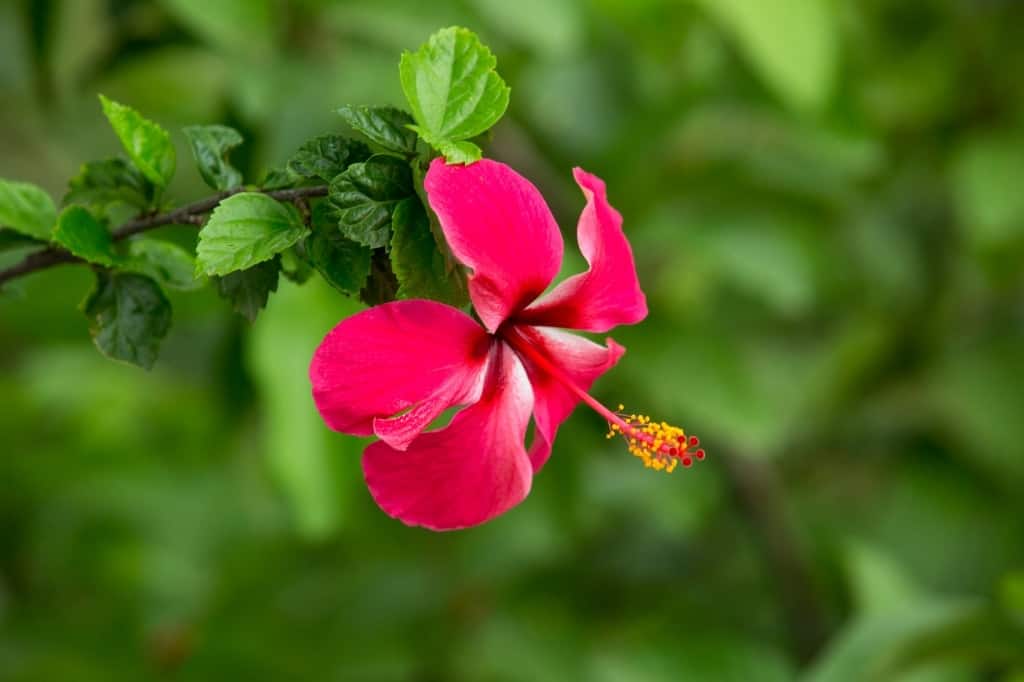
Hibiscus – This is a plant with flowers ranging from bright red to yellow. It is a tropical plant. Hibiscus flowers are high in antioxidants and vitamin C and are used to make tea. As a result, this plant is also used in medicine.
Bleeding Heart
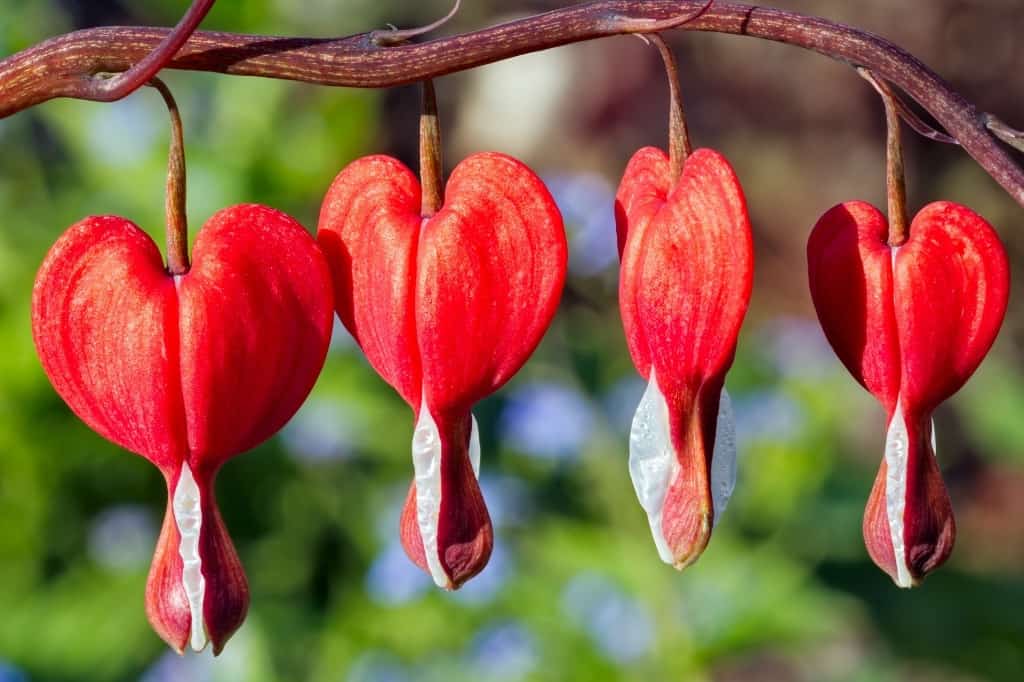
Bleeding Heart – This plant gets its name from its heart-shaped reddish-pink flowers.
The flowers dangle from the stems, and beneath the heart shape, there is a droplet-shaped white petal. It is a love symbol. Bleeding hearts prefer the shade and bloom in the spring.
Petunia
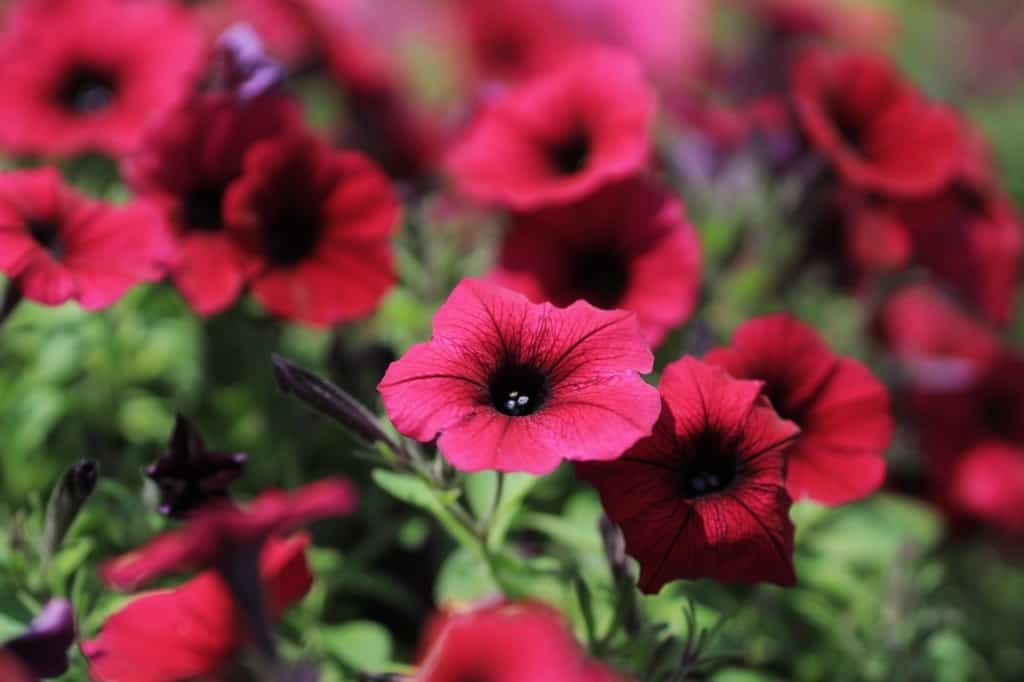
Petunia – Although most people consider petunias to be annuals, they can also be grown as tender perennials in some areas.
Petunias are tender perennials native to South America that are among the best bedding plants due to their ability to produce a vibrant mass of colorful summer blooms.
A Final Word on Red Things
As you can see, there are a lot of red things: animals, birds, reptiles, flowers, foods, and gemstones. That wraps up our list of things that are red, which we hope you found interesting.

